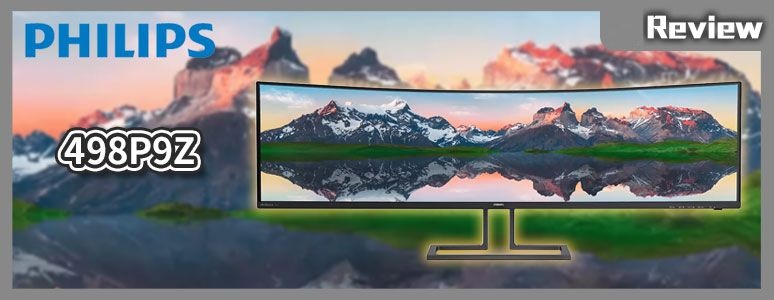
PHILIPS launched a new 32:9 1800R curved screen 499P9H1 this year, with a 49-inch 5120×1440 Dual QHD 5K resolution and MultiView function to achieve the effect of two 27-inch 16:9 Quad HD screens side by side at the same time, thereby replacing multiple screens to meet multiple needs. It is equipped with VA panel, 165 Hz, Adaptive Sync, DisplayHDR 400 and other specifications. Whether it is watching movies or 3A game masterpieces, you can have an excellent immersive experience. It is also equipped with LowBlue low blue light mode and flicker-free technology, reducing the Long-term use will affect the burden on the eyes and vision, and bring a more comfortable look and feel and experience.
PHILIPS 498P9Z Specifications:
Panel size: 49 inches (diagonal 48.8 inches / 124 cm)
Actual viewing range: 1191.936 x 335.232 mm, 1800R curvature
Aspect ratio: 32:9
Maximum resolution: HDMI-5120 x 1440 75 Hz / DP -5120 x 1440 165 Hz
LCD Panel Type: VA LCD
Color Gamut (Minimum): DCI-P3 91%
Color Gamut (Typical): NTSC 100%, sRGB 122%, Adobe RGB 89%
Brightness: 550 cd/m² Contrast
Ratio ( Typical): 3000:1
SmartContrast: 80,000,000:1
Display Colors: 16.7 million
Response Time (Typical): 4ms
Viewing Range: 178°/178°(C/R>10)
HDR: DisplayHDR 400 Certified
Adaptive Sync Adaptive Synchronization: Yes
Input Signal: DisplayPort 1.4 x 1, HDMI 2.0 x 3
USB: USB 3.2 x 2 (Upstream), USB 3.2 x 4 (Downstream, one of which supports BC 1.2 protocol fast charging)
Audio (Input/Output) : Audio output
Built-in speaker: 5W x2
Power supply: 100-240VAC, 50-60Hz (built-in)
Product with stand: 1194 x 568 x 303 mm
Product with stand: 15.20 kg
VESA: 100×100
Kensington anti-theft lock: Yes
Height adjustment: 130 mm
left and right rotation: -/+ 20 degrees Front and
rear tilt: -5~15 degrees
PHILIPS 498P9Z Unpacking
The 498P9Z unpacked this time is classified as a commercial display series in the PHILIPS display product line and is marked as 32:9 SuperWide on the official website. The curved LCD monitor occupies the entire viewing angle with a 49-inch 32:9 ratio 1800R curved screen. It uses a VA panel and has specifications such as QHD 2K, 5120 x 1440, 165 Hz refresh rate, and Adaptive Sync. It is positioned quite suitable for watching movies, Chasing dramas, and playing with more immersive plots that are masterpieces of games. The large-scale viewing angle screen also has a good visual experience and situational realism for the “Forza Horizon5” vehicle operation type game.
The contents of the entire outer box weigh 21.5kg. The screen itself is fragile, so it is recommended that two people carry it and open the box together. It should be noted that the opening surface should be opened from the bottom of the box, not the top of the box. You need to confirm whether the direction is correct beforehand.
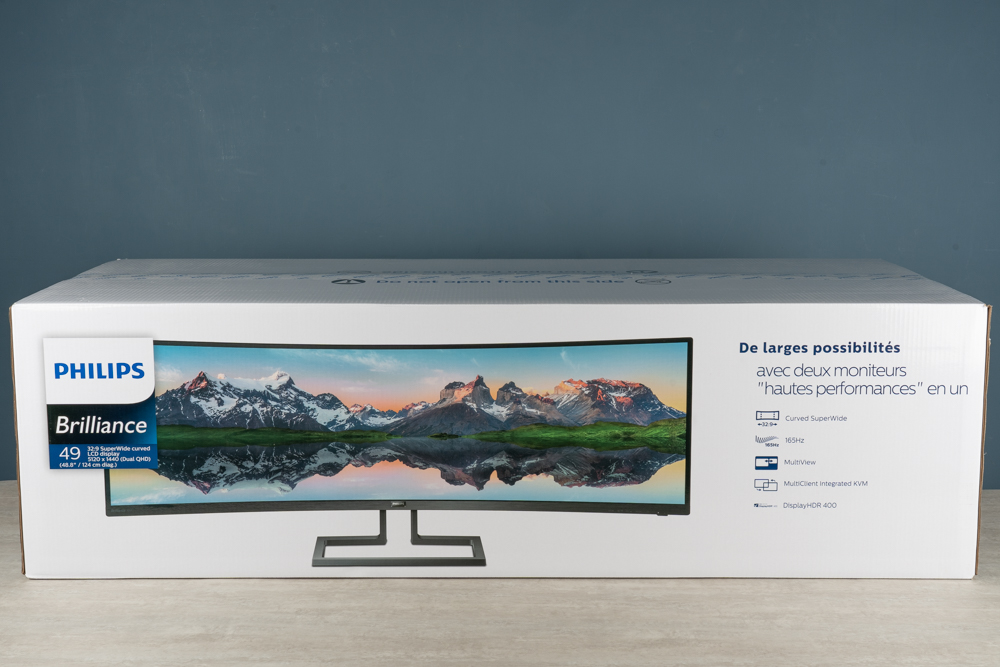
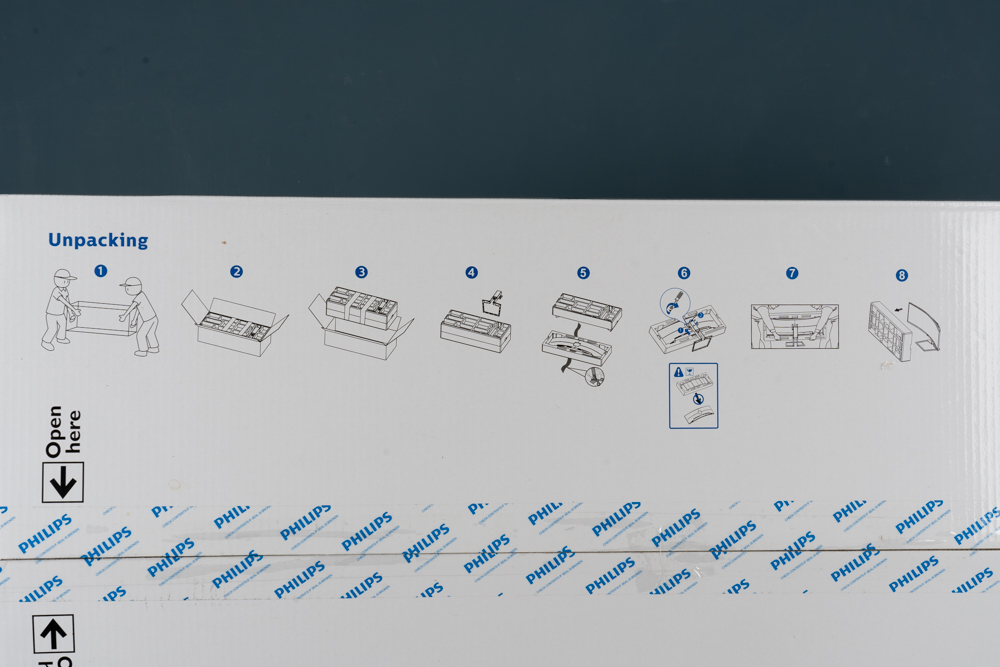
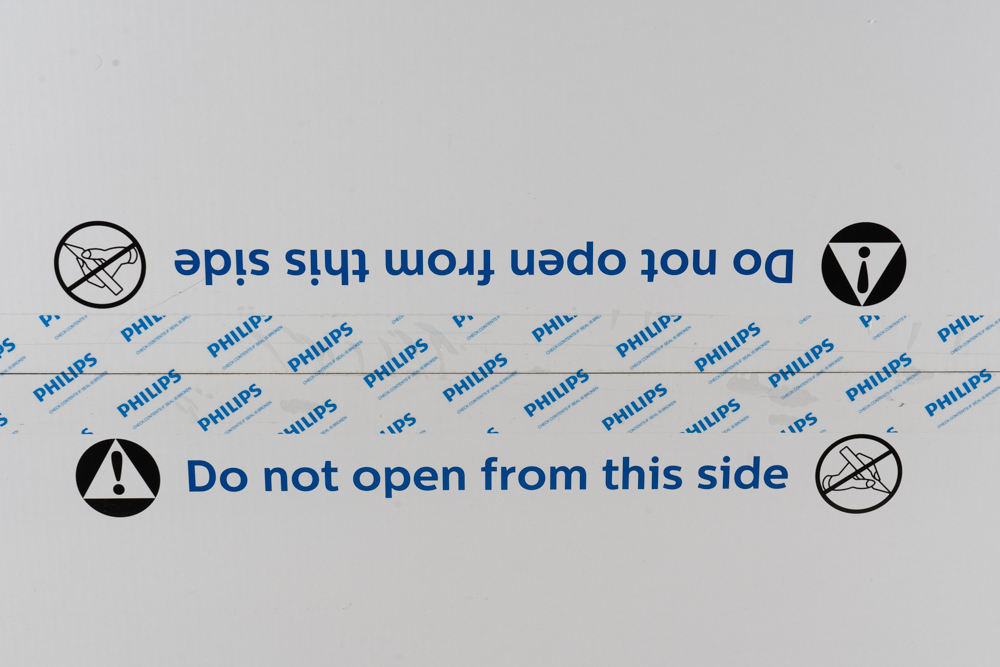
The method of fixing the screen is recommended to start with installing the screen bracket. First, keep the screen in the Styrofoam inner box, snap the 4.3kg bracket into the tenon on the back of the screen, and then lock the VESA four-sided lock holes to complete the whole process. Fixing process of the bracket base.
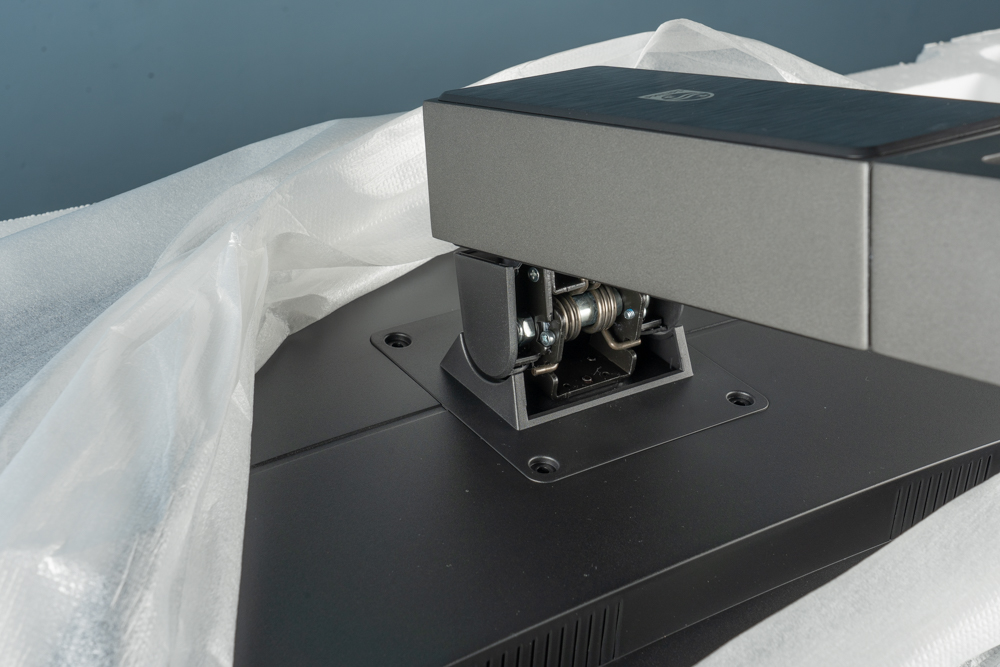
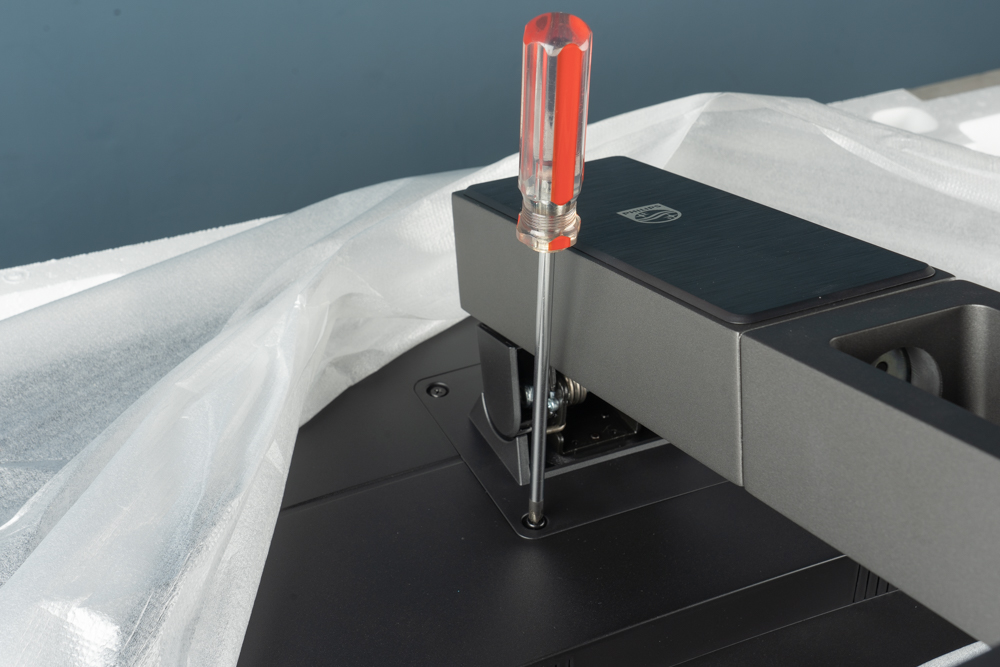
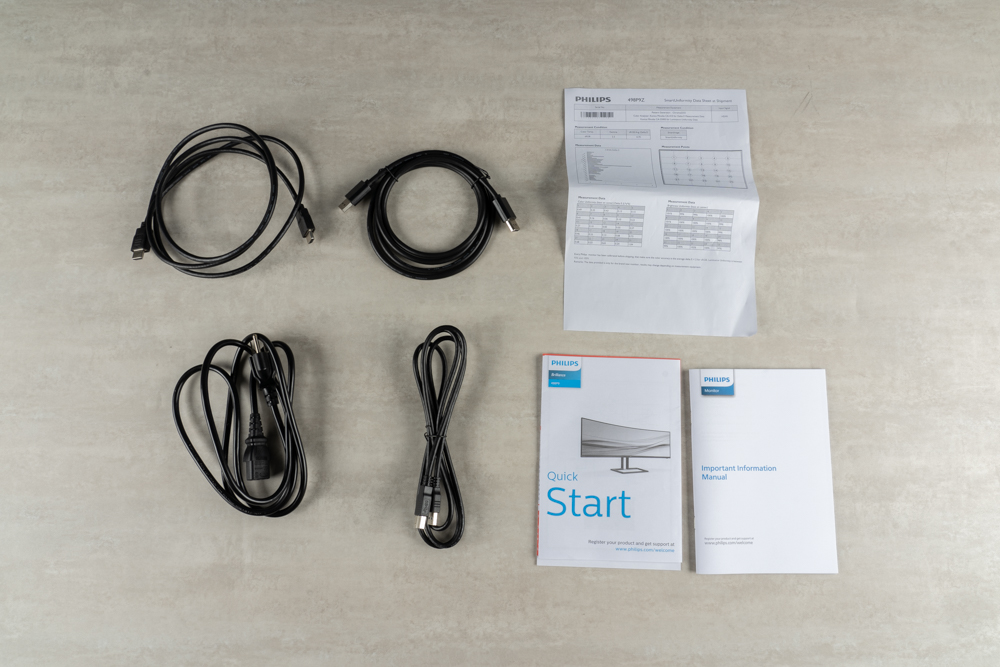
The calibration report of 498P9Z indicates that each PHILIPS screen will undergo color calibration before shipment to ensure that sRGB Avg can Delta E < 2, and the brightness uniformity will be between 93% and 105%.
The attached screen calibration report indicates that the test equipment used Konica Minolta CA-410 and CA-2500S and tested the Delta E color difference value of sRGB. The value marked on the official website is Delta E < 2, and finally, measured sRGB Avg Delta E The average value is 0.7. The test data for uniform brightness is also provided in the report, and the performance falls between 97% and 102%.
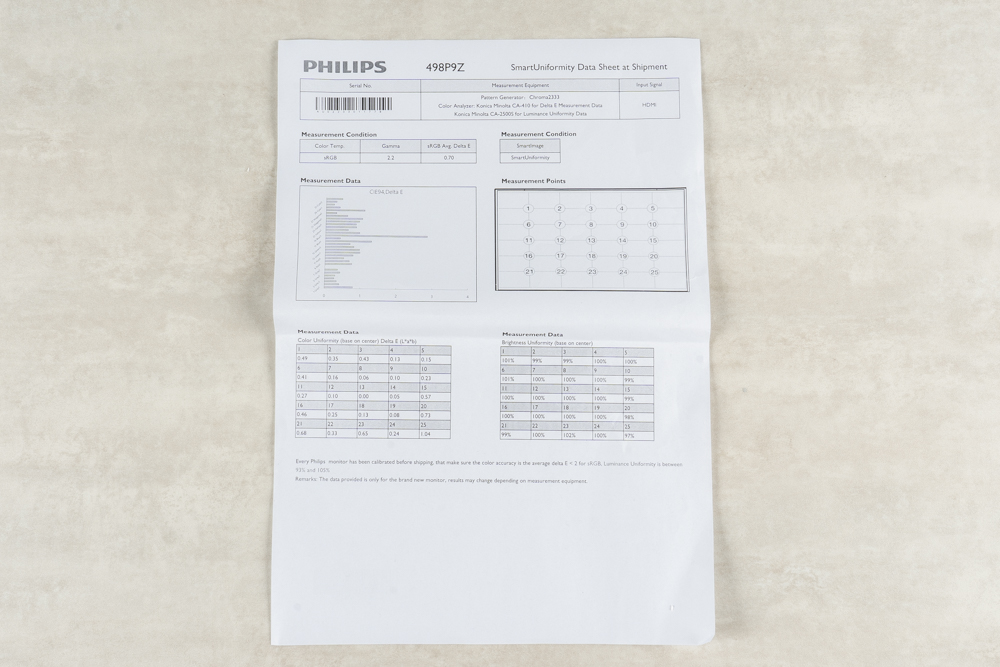
The 498P9Z adopts the same 49-inch 32:9 screen ratio as the previous generation 499P9H1, which is a size that is not often touched by daily users or e-sports gamers, but one of the advantages of 32:9 is that the screen can accommodate one-time Many windows, the high resolution of 5120 x 1440 is equivalent to two side-by-side 27-inch 16:9 QHD screens, directly replacing the troublesomeness of setting up multiple screens for modern users, such as the color gap between different panels, and Or the incompatibility of dual screens with different refresh rates can be solved directly through a 498P9Z.
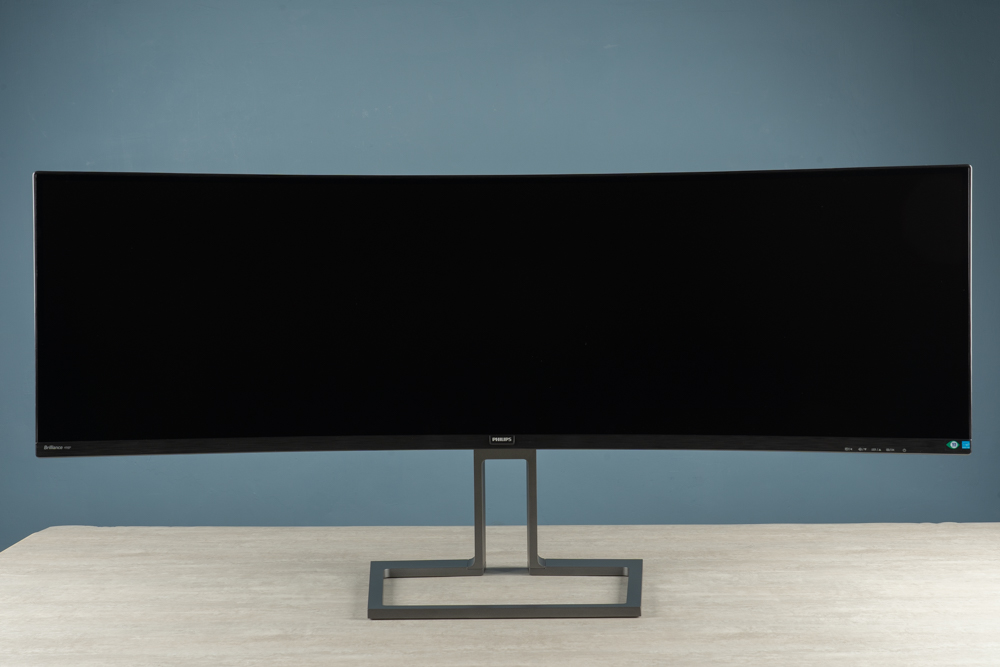
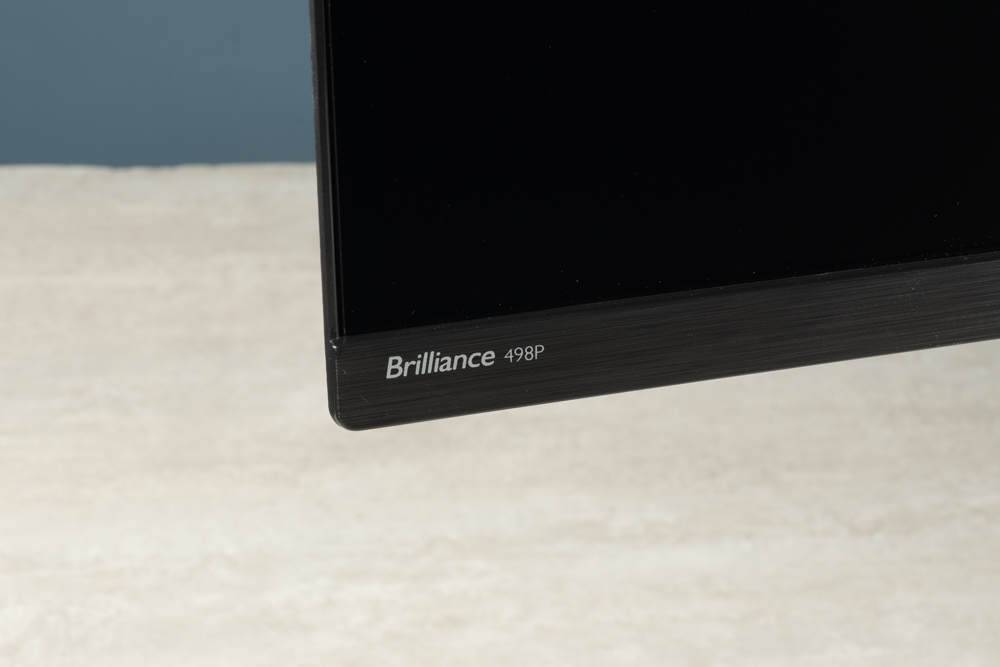
On the back of the screen, since 498P9Z is positioned as a commercial screen series, compared with the RGB lighting effects of the common gaming screens, the rear of this screen looks more low-key and restrained, without additional light bars and other lighting effects.
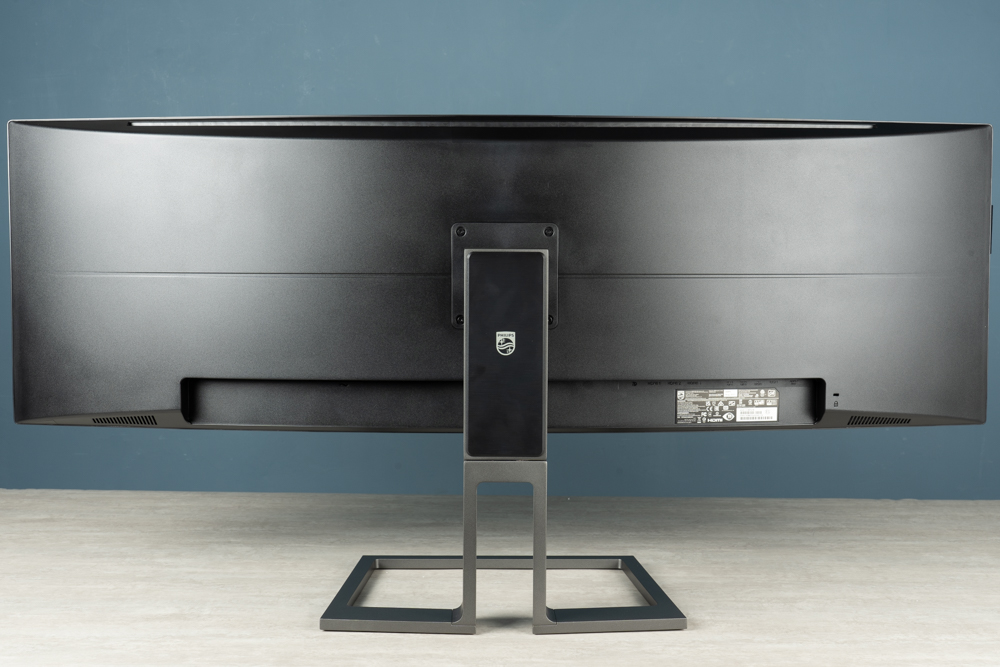
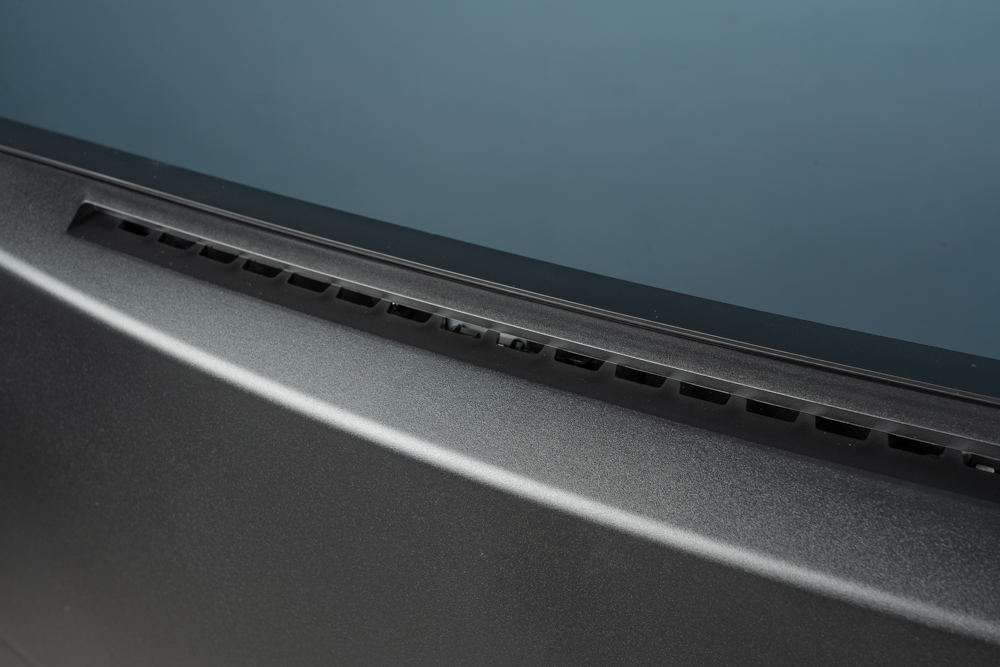
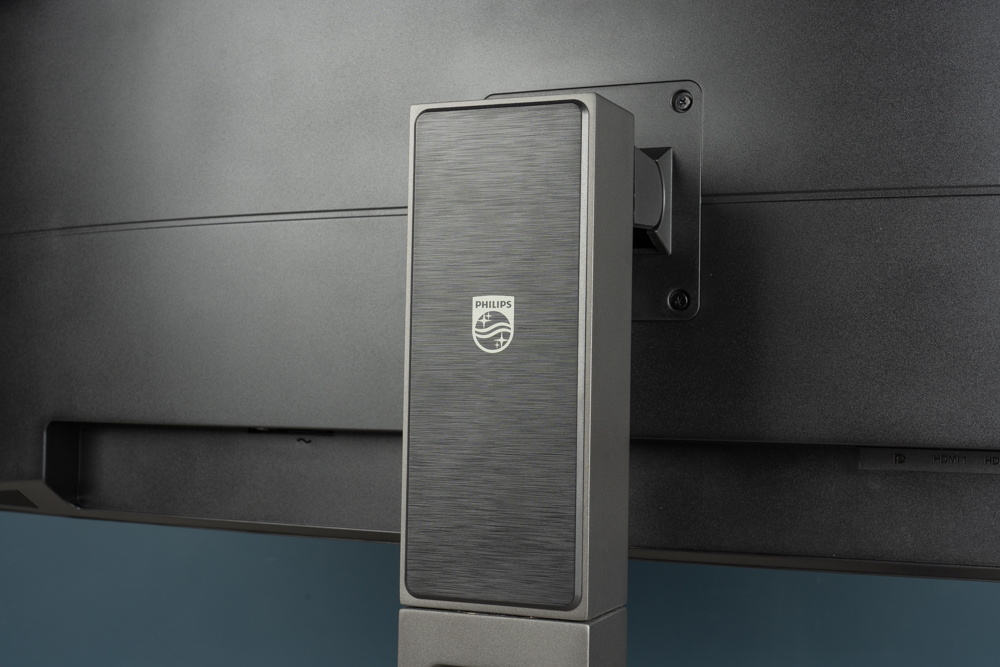
The aluminum alloy screen base itself has a weight of about 4.3kg. The base bracket provides enough center of gravity to support the large screen above firmly, ensuring a stable center of gravity during use. The use of anodized surface treatment makes the base a good texture, but it is a pity. What’s more interesting is that although there is a hollow design for cable routing at the rear, there is no additional hidden wire or a whole line groove to hide the wire, which may be more uncomfortable for users like the author who are accustomed to the visual clearance of the desktop.
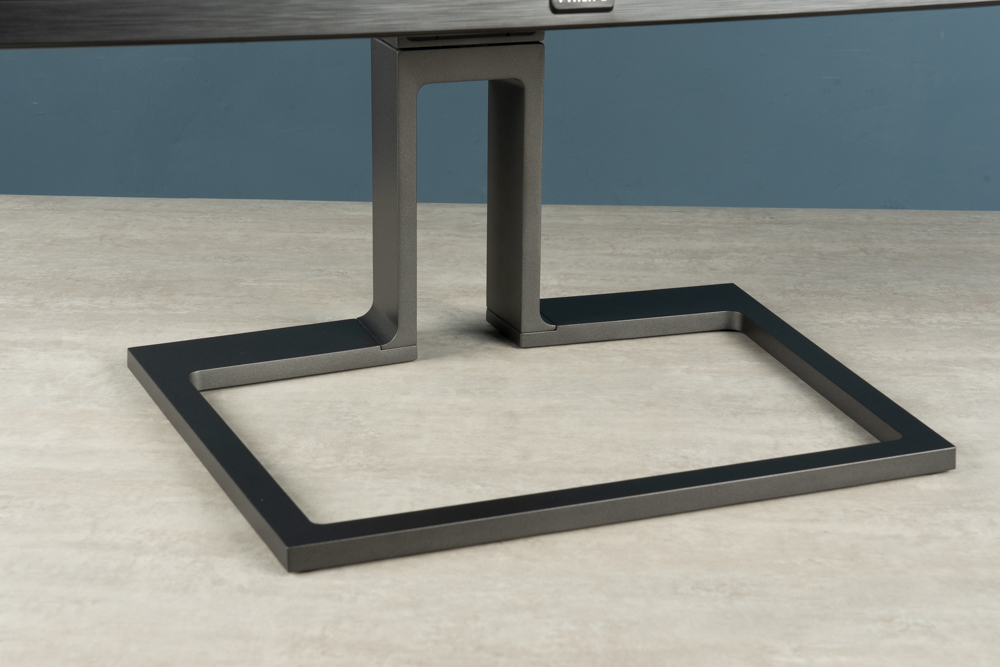
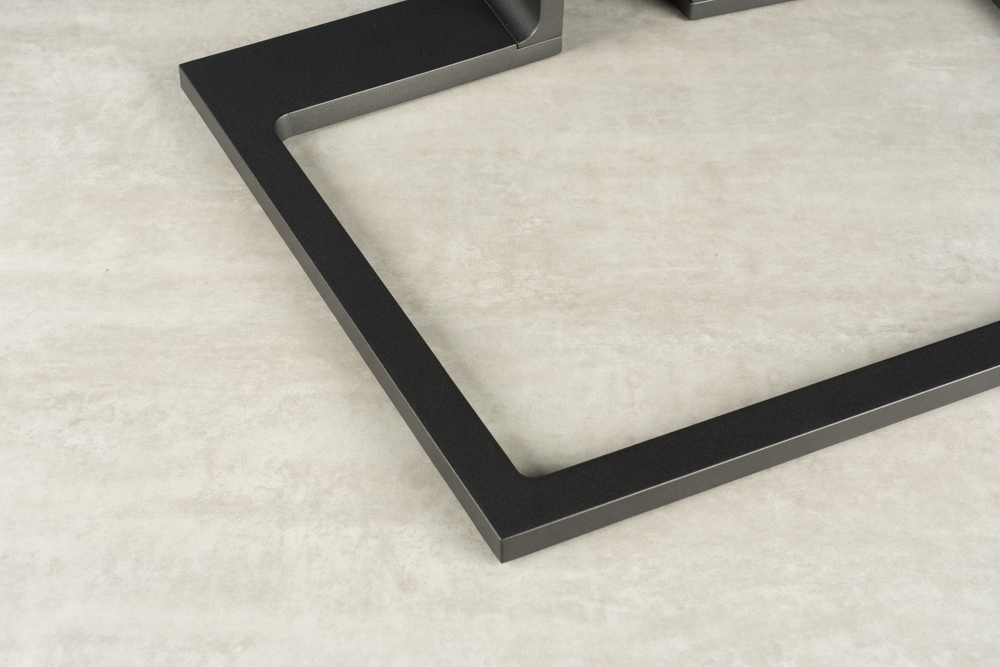
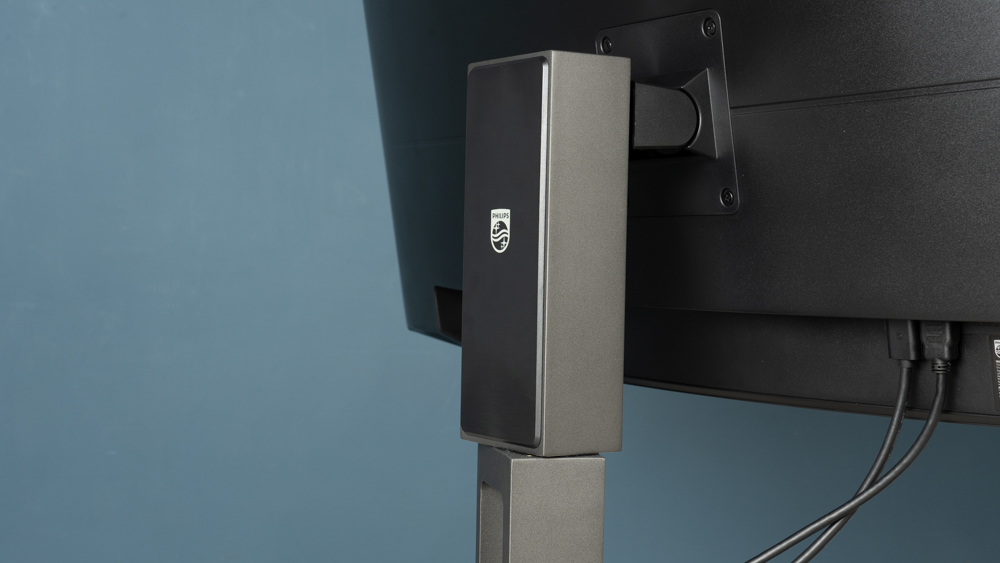
The screen bracket can also be adjusted from 15 to -5 degrees forward and backward, rotate the screen left and right ±20°, and adjust the height to 13cm. Since the screen is fragile, it is best not to press it when adjusting the angle. Regarding the screen panel, it is recommended to hold the force from the frame as the point of application for adjustment. To avoid possible screen damage, such as panel peeling, the screen should not be tilted downward more than -5 degrees.
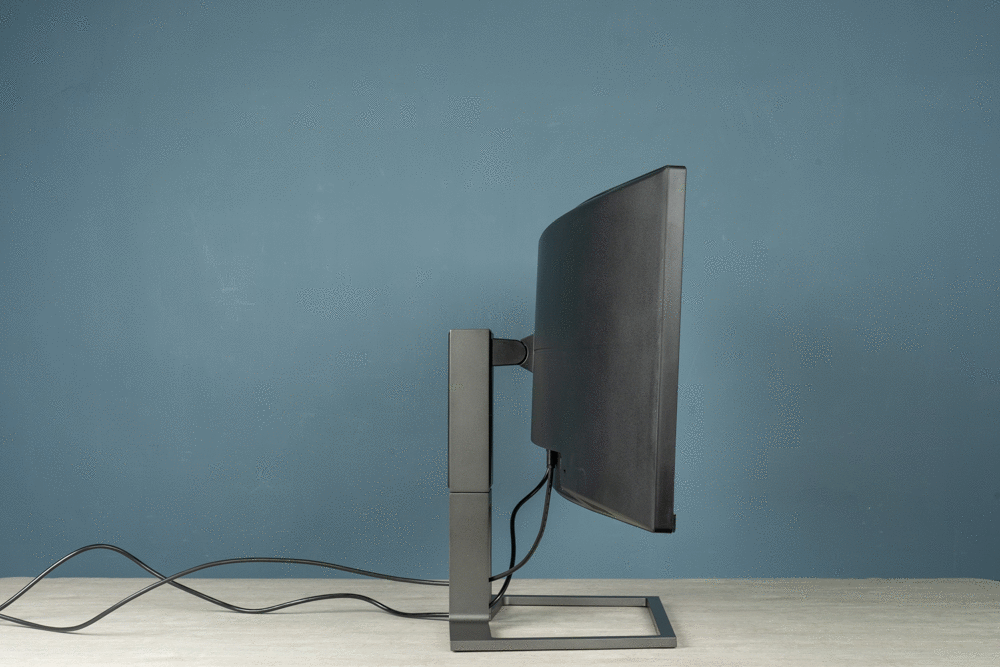
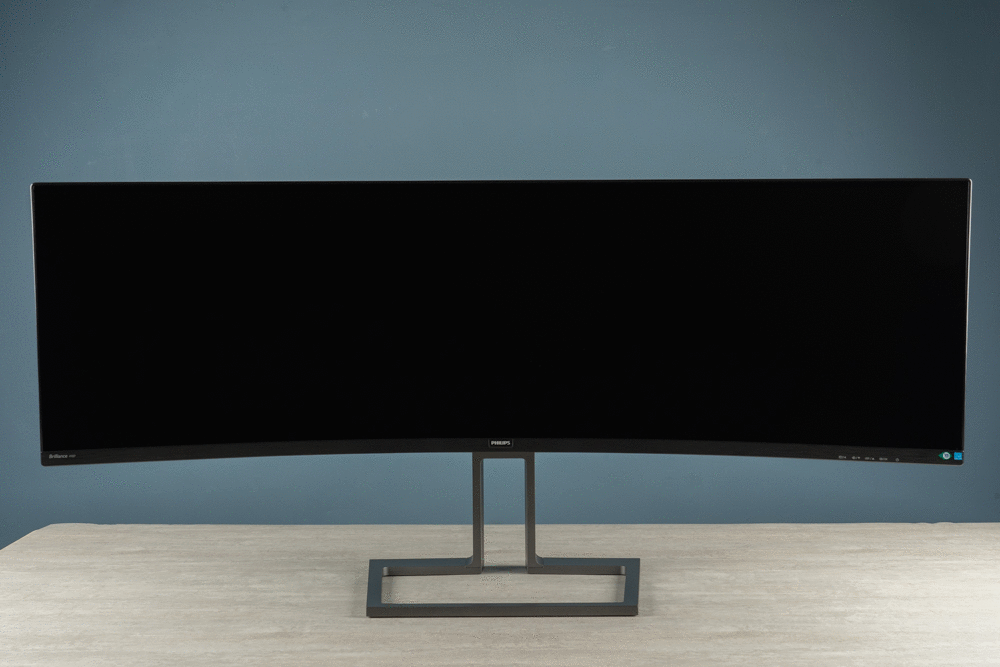
The OSD function buttons of 498P9Z are set at the bottom of the lower right corner of the screen. With the graphical function indicator in the lower right corner, the five buttons independently set up are very friendly to use, but after the author’s experience, I think that the three directions of return, down, and up are set and arranged. It is not intuitive to use, and players may need to familiarize themselves with it during use.
From left to right, the functions are smart image shortcut key/return, change input signal source/menu item down, user preference setting key/menu item up, screen display setting menu/OK confirm setting key, display power, and other functions keys.


The connection ports of PHILIPS 498P9Z include the basic screen input interface and two sets of USB hub expansion interfaces. From left to right, they are DisplayPort 1.4, HDMI 2.0 x3, USB UP x2, USB-A x4, and a 3.5mm audio jack.
In addition to being equipped with DisplayPort and HDMI input interfaces, the 498P9Z also supports the MultiView function so that different dual-system images can be displayed on the same 498P9Z screen at the same time. With four USB-A built-in MultiClient Integrated KVM functions, the situation of controlling two computers with keyboard and mouse.
One of the yellow marked USB-A ports of the USB hub supports BC 1.2 (5V/1.5A) fast charging function and can be used for mobile phones or external hard drives and other devices, but to comply with international energy-saving standards after the screen enters the standby and shutdown state, the USB hub will automatically disable and stop power supply. If you want to continue to supply power to additional devices, you can enter the OSD menu and select “USB Standby Mode,” and then switch the function to “On” mode (the default is “Off”). In standby mode, continue to use the USB slot for the power supply and charging function.
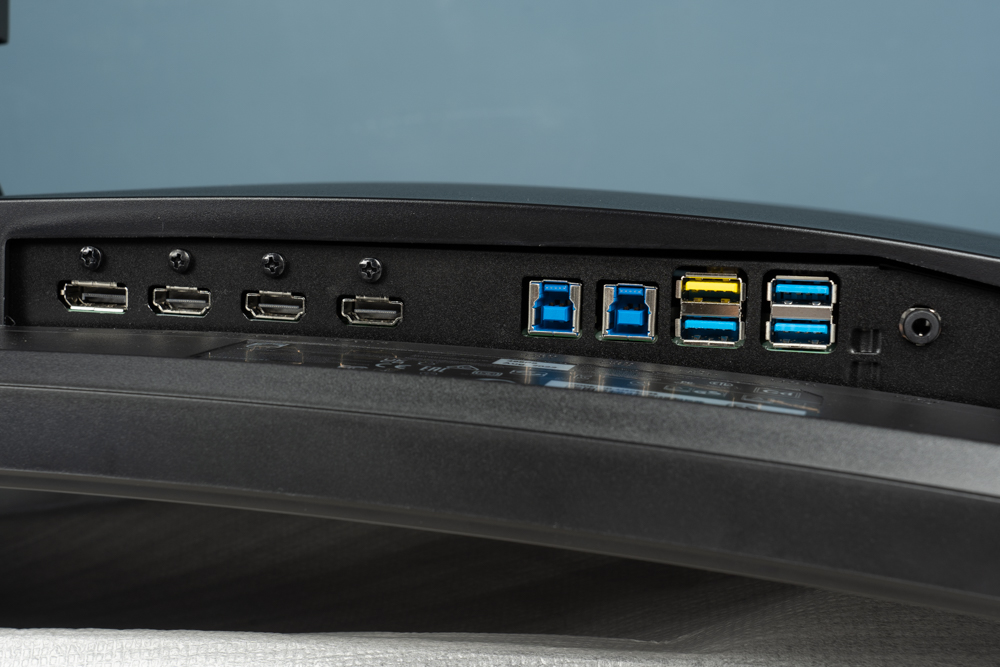
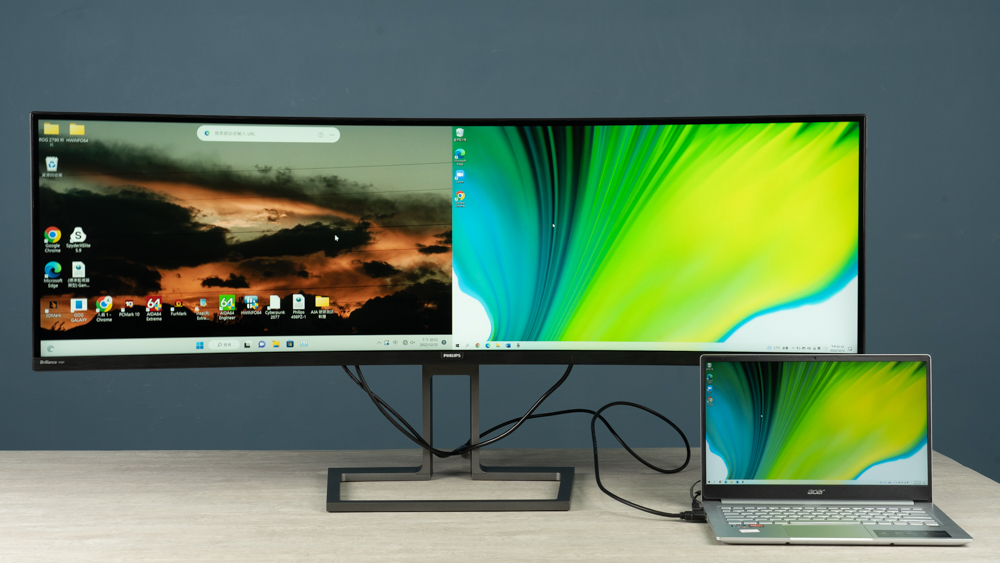
In the huge size of 498P9Z, the power transformer is also integrated into the screen. When installing the screen, there is no need to hang a transformer on the table. It also has an independent power switch, which can be completely cut off when not in use. Energy saving and carbon reduction.
The screen is equipped with two 5W speakers, which are set in the middle of the screen with the bracket as the center line, and one of the speakers is arranged in the way of left and right mirrors, which is next to the power switch.
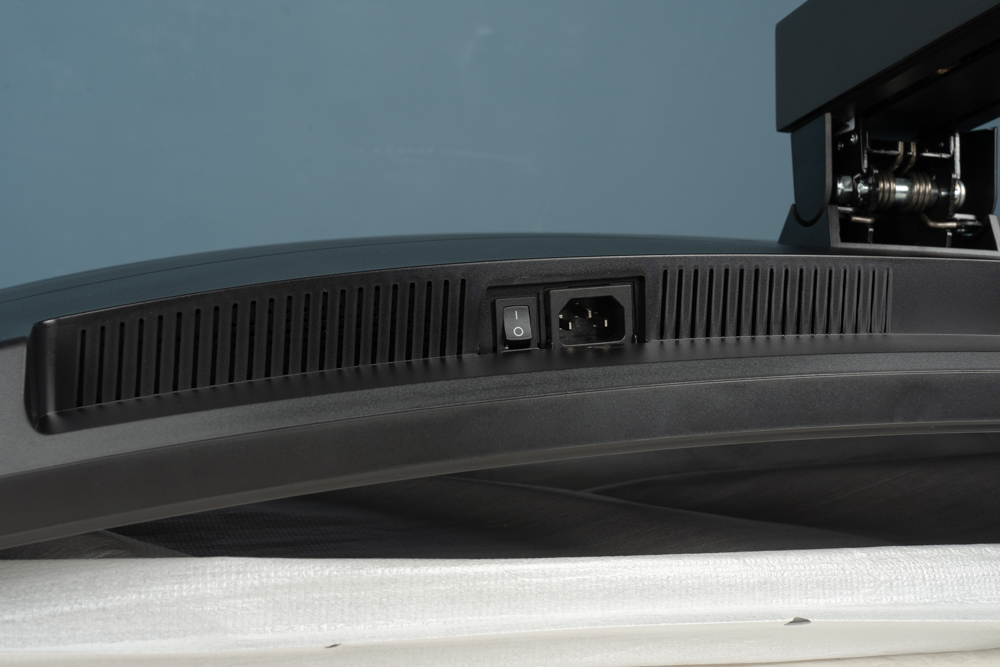
Actual OSD menu operation/Smart display mode quick switching
An OSD function button is in the lower right corner of the 498P9Z screen. Press the screen to display the setting menu to enter the OSD function menu. Several major functions can be set in the menu, such as Low blue light mode, screen input detection setting, SmartImage (smart display mode), brightness, multi-screen, volume, color setting, multi-language setting, USB setting, etc., the basic settings of the screen can be adjusted in the OSD menu.
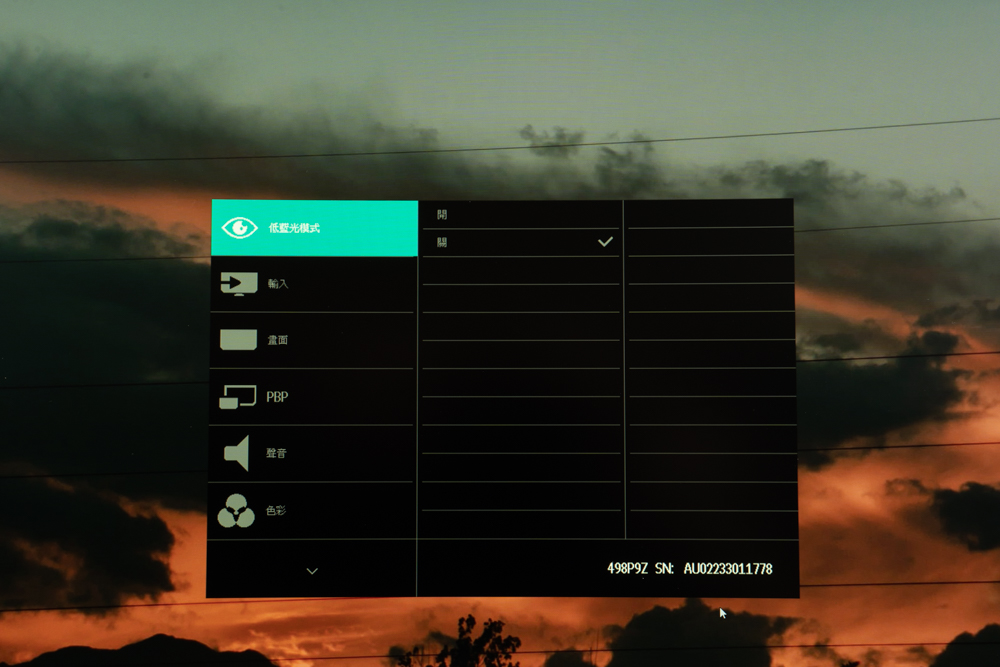
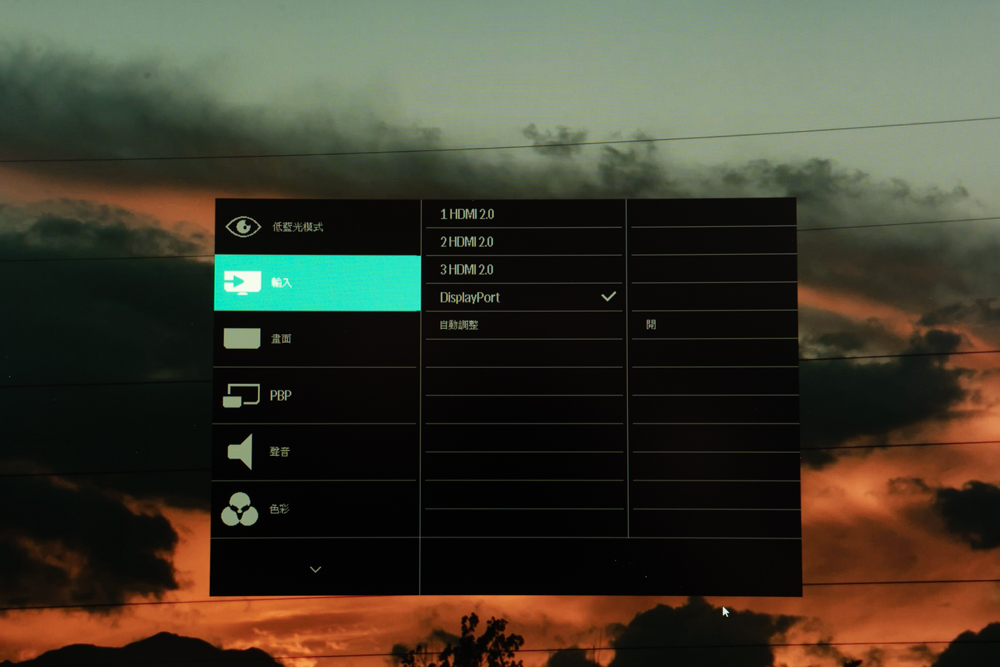
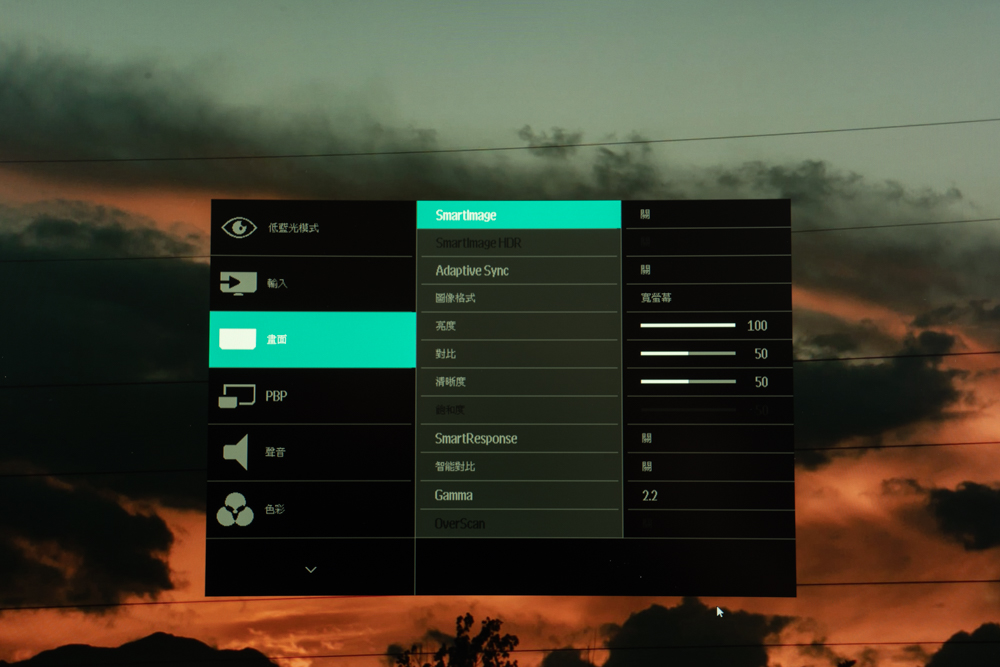
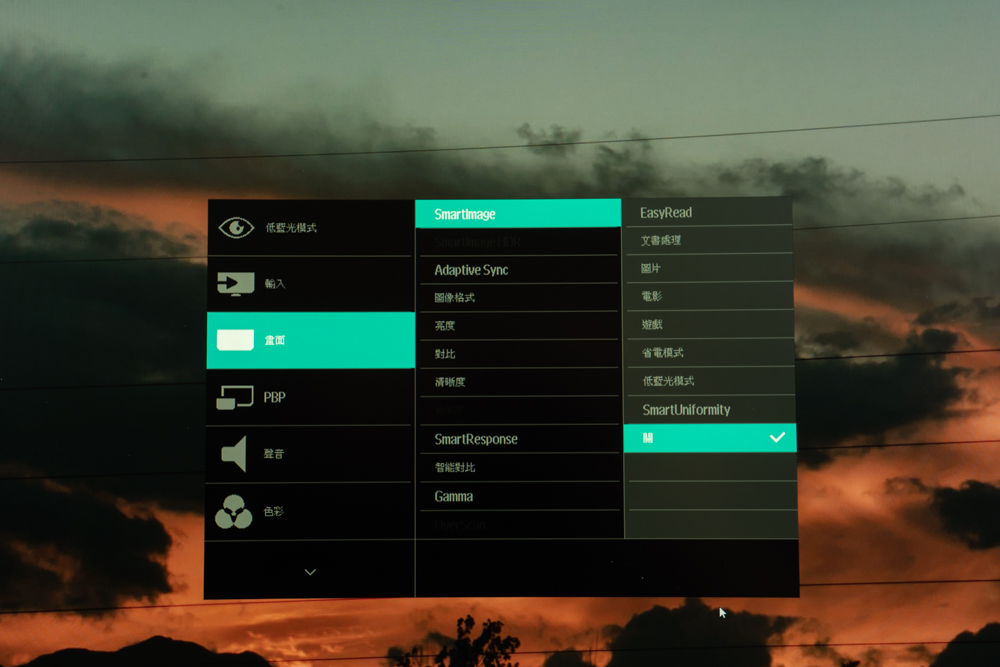
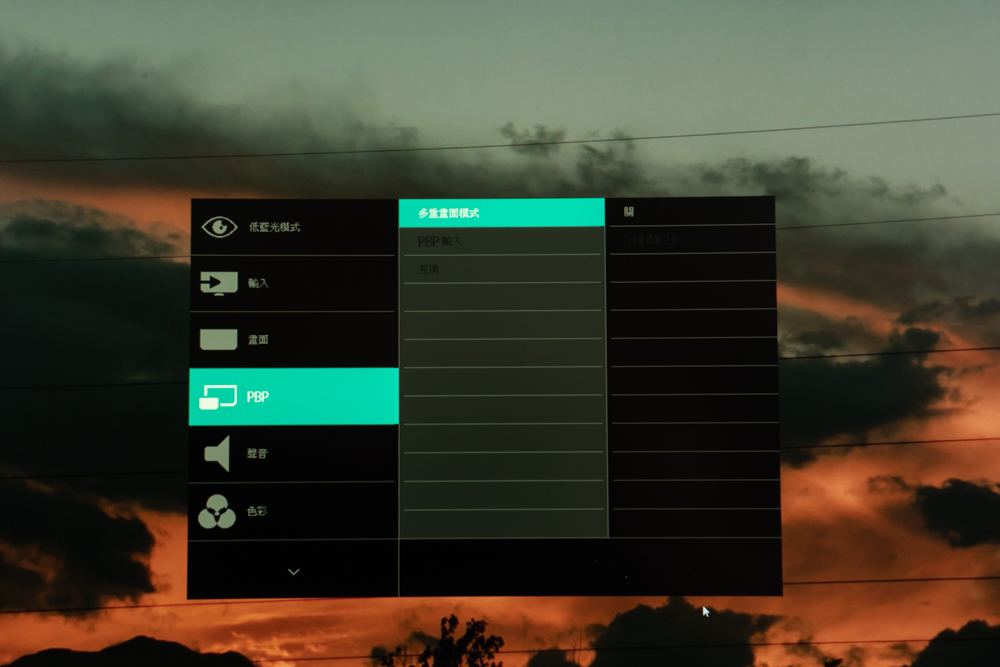
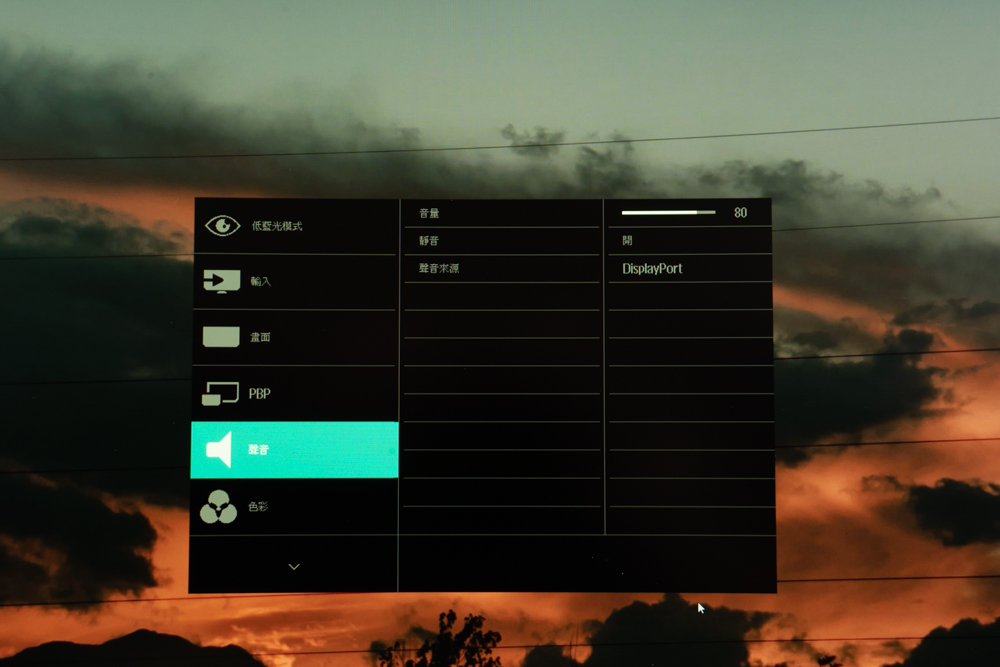
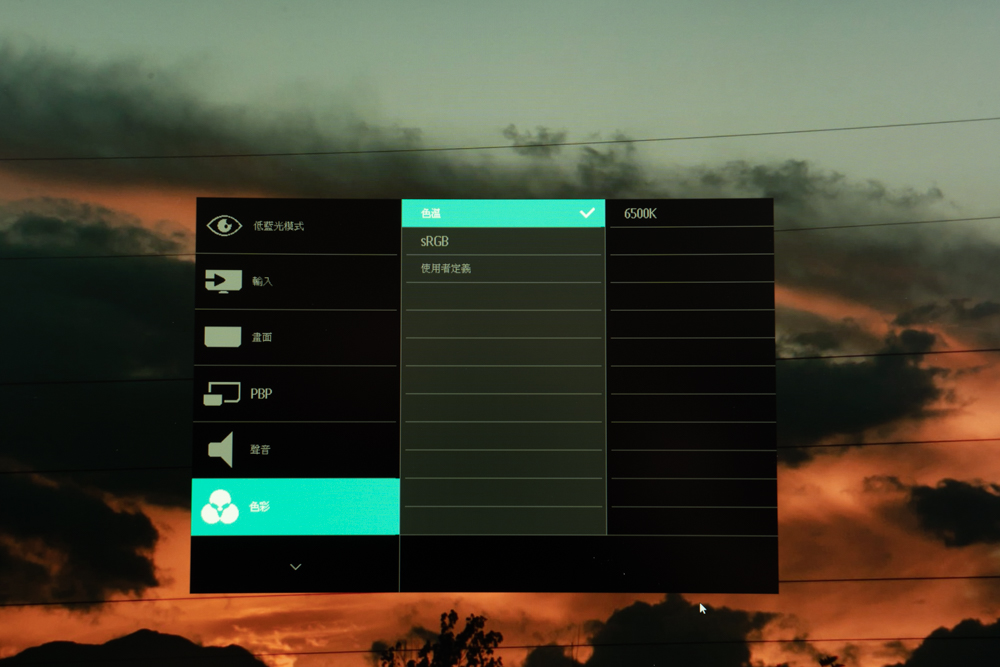

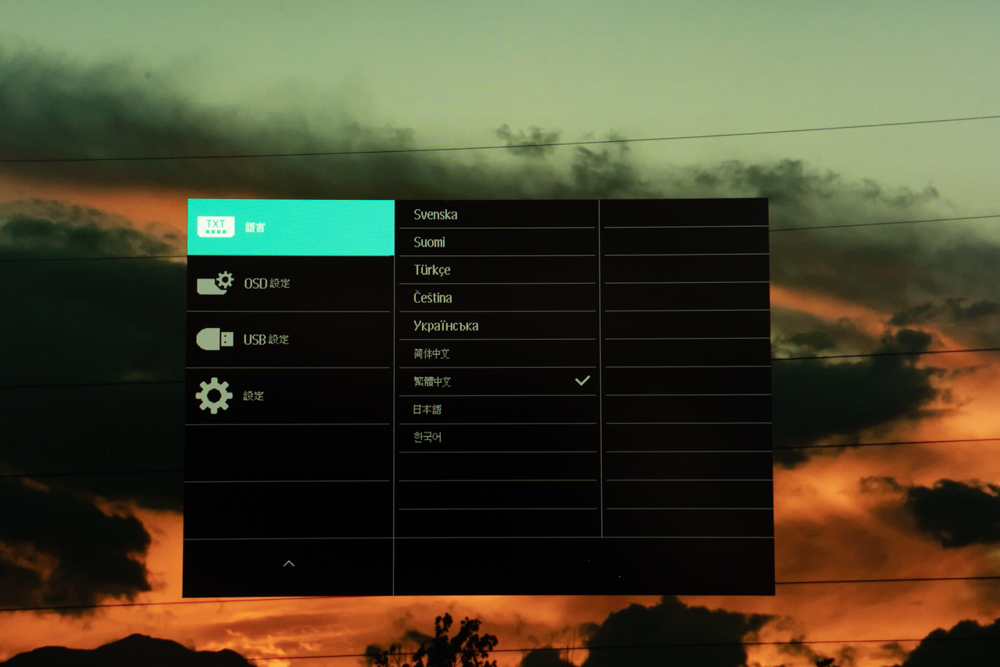
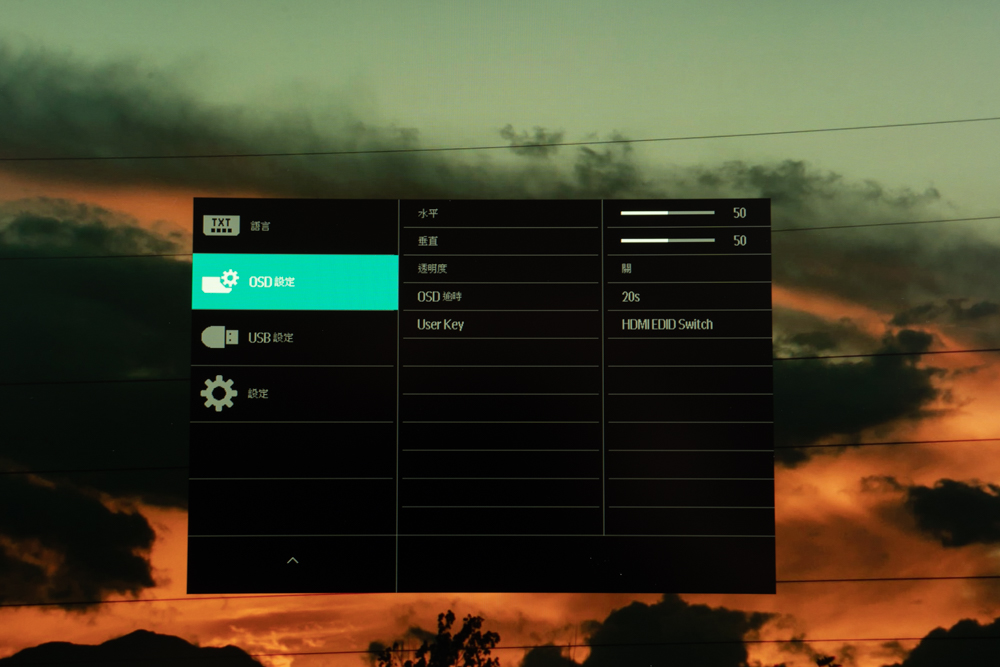

The actual visual effect shows
PHILIPS 498P9Z has VESA-certified DisplayHDR 400, which provides the entry-level HDR function’s brightness, contrast, and color, making the user’s visual experience even more amazing. Then let’s take a look at the actual display information. !
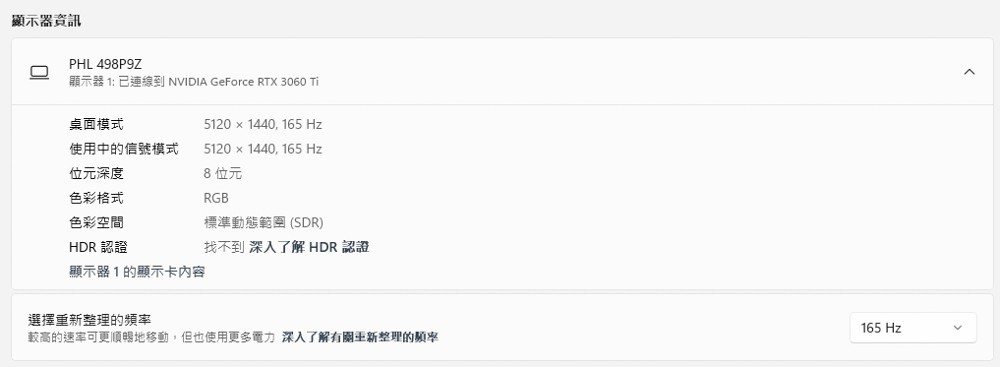
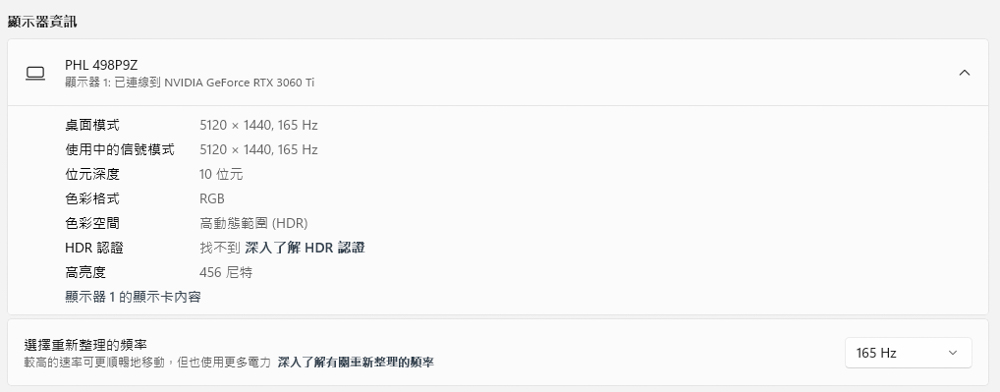
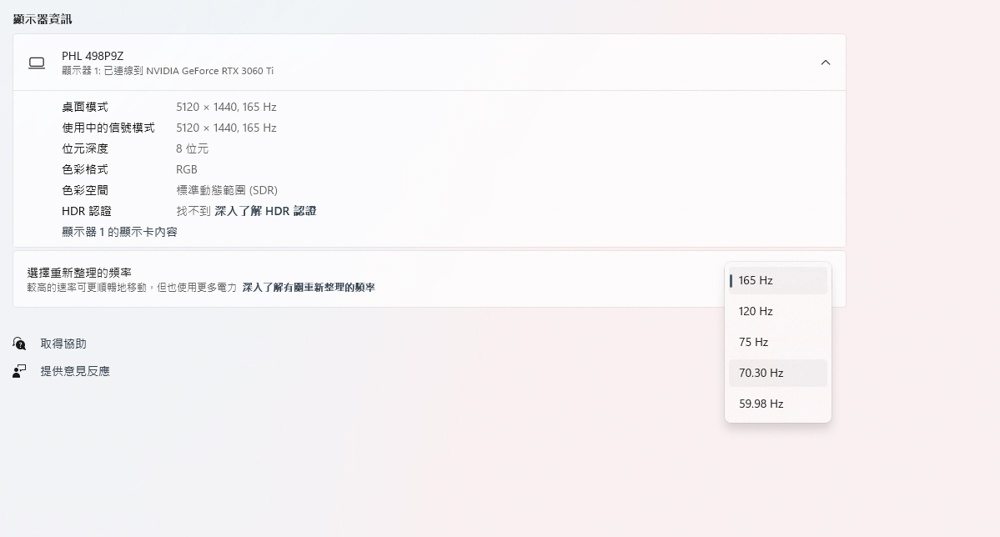
The screen has image specifications of 5120 x 1440, 165Hz, 8-bit, RGB in the default SDR mode. Next, let’s look at the display’s color parameters. Here we use the Datacolor SpyderX Elite color calibrator for color calibration and measurement, and the color gamut coverage You can get 100% sRGB, 85% AdobeRGB, 90% DCI-P3, and 80% NTSC.
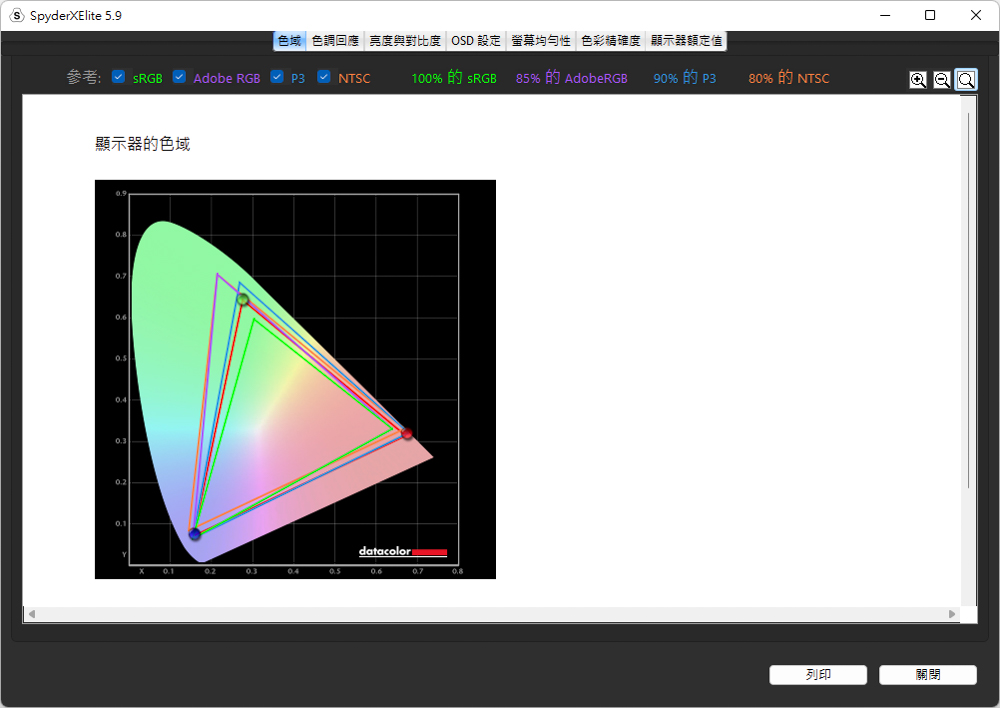
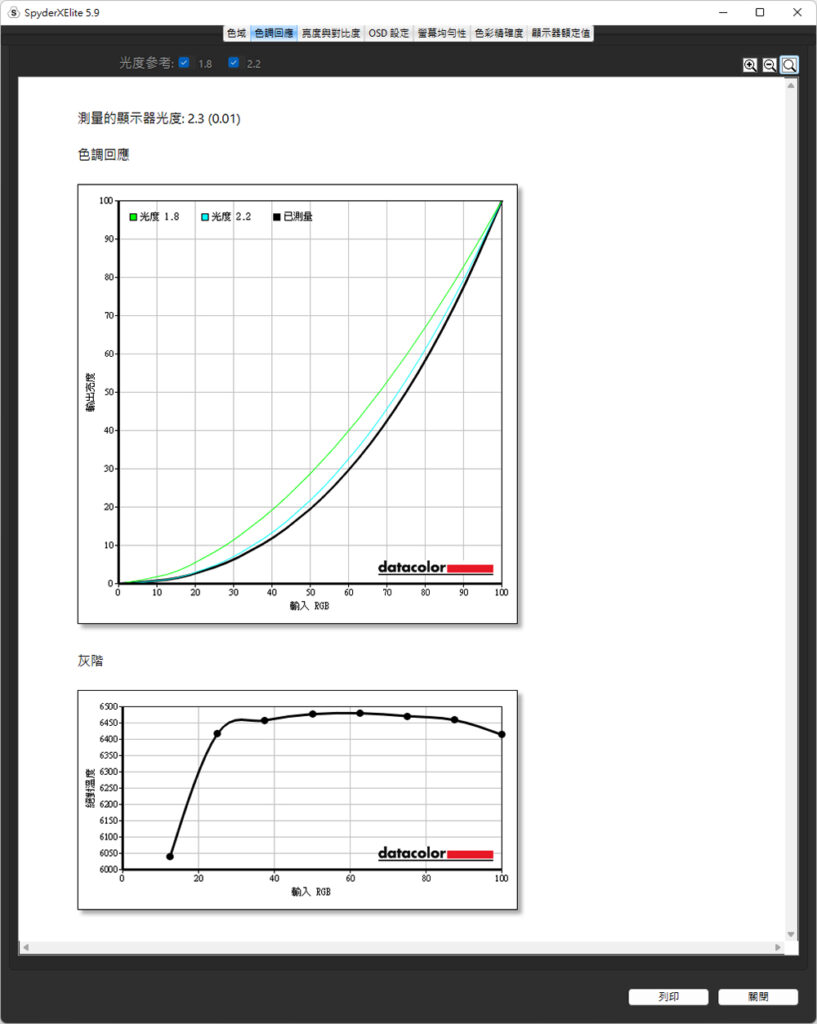
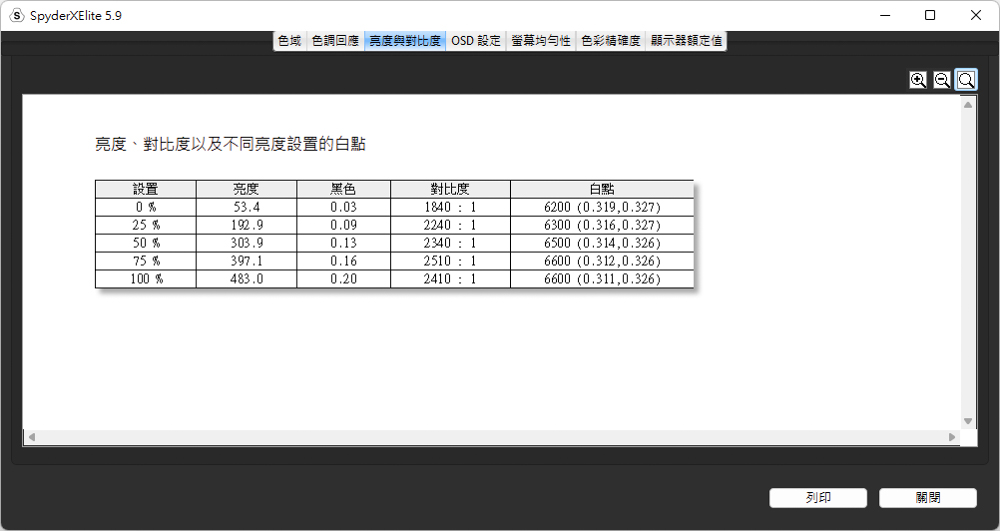
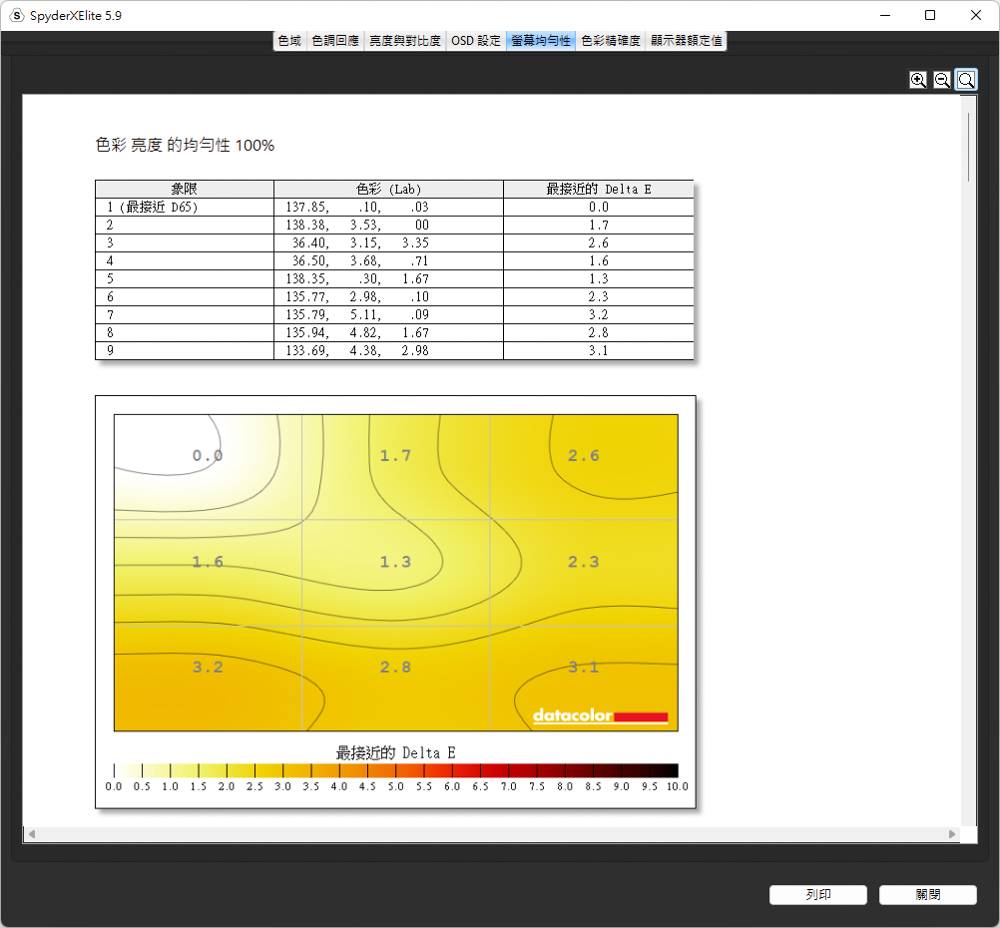
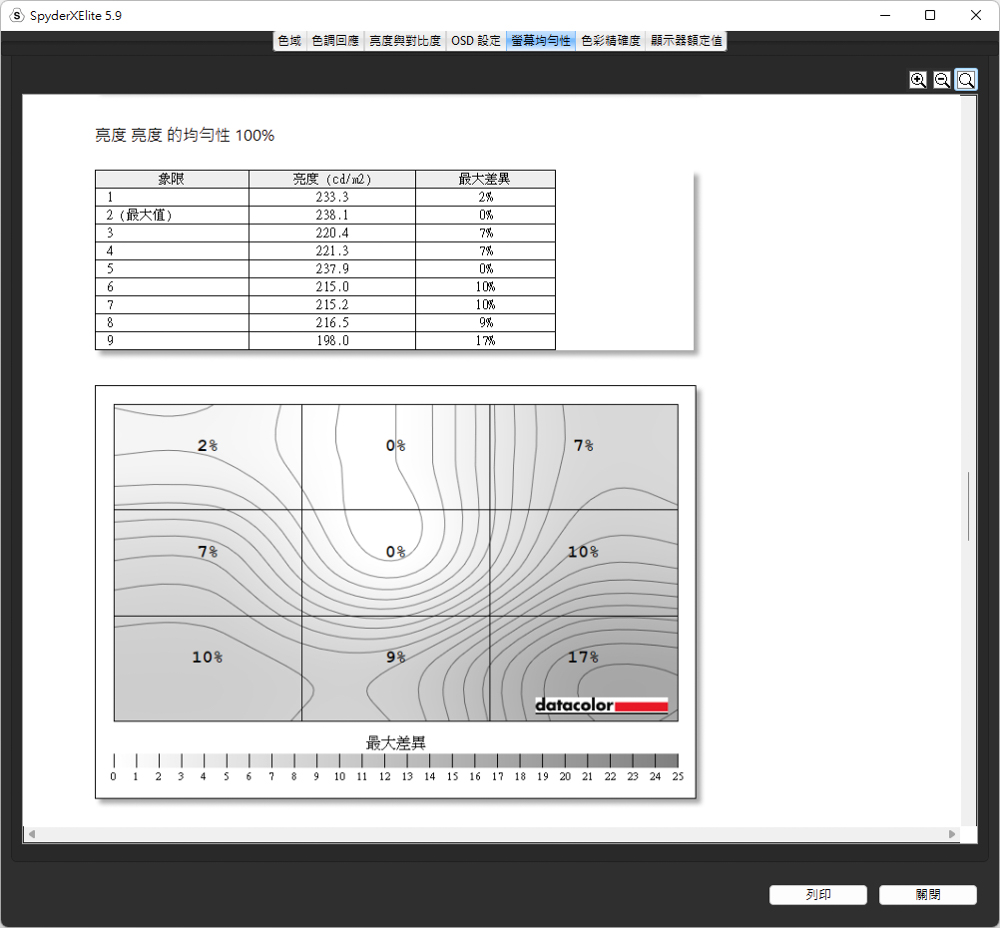
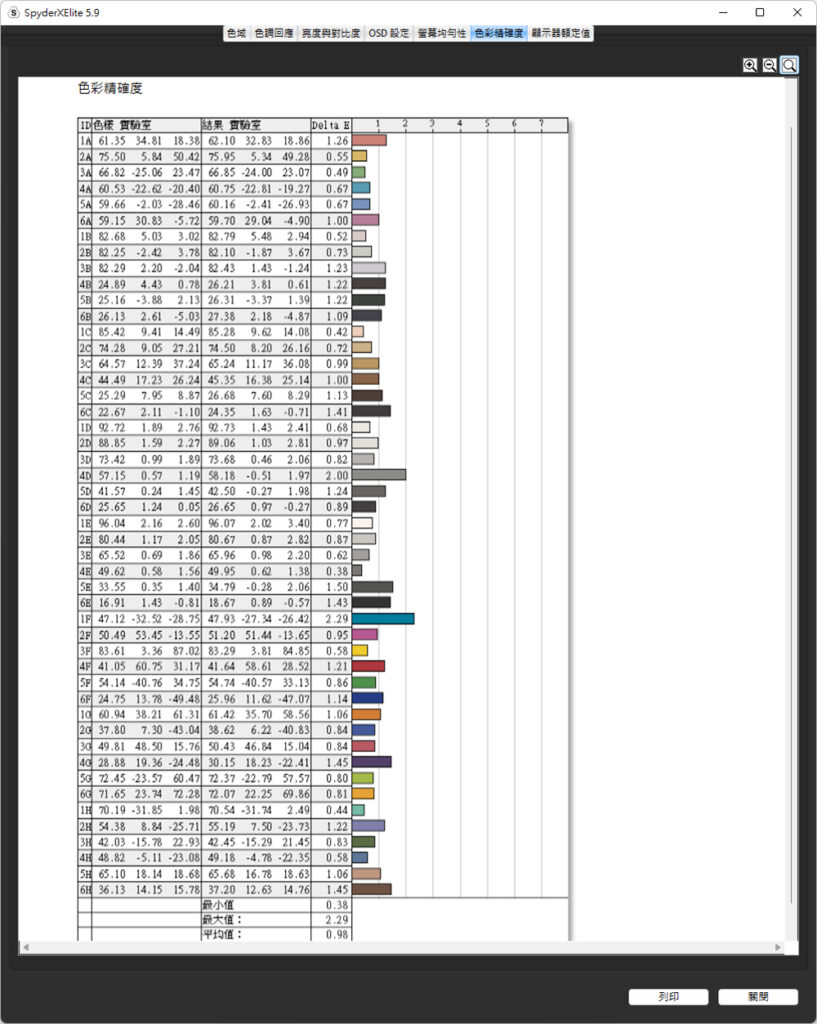
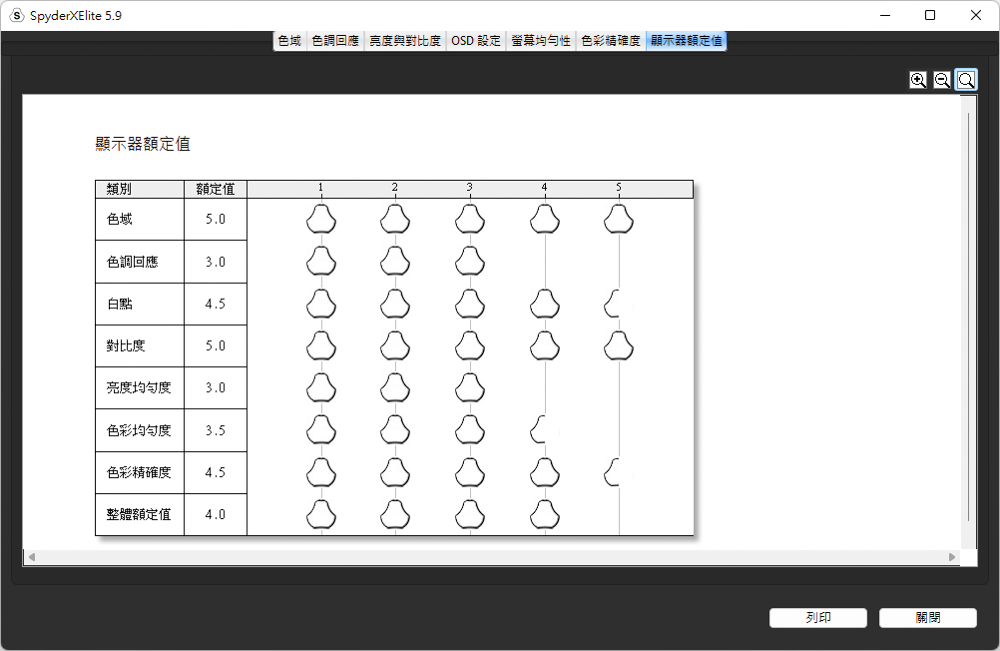
After reading the test report, the author also reproduced some pictures, videos, and Cyberpunk 2077 game screens to show you how the PHILIPS 498P9Z’s screens are rendered. However, for a more accurate picture texture, it is recommended that you watch the real screens for yourself.
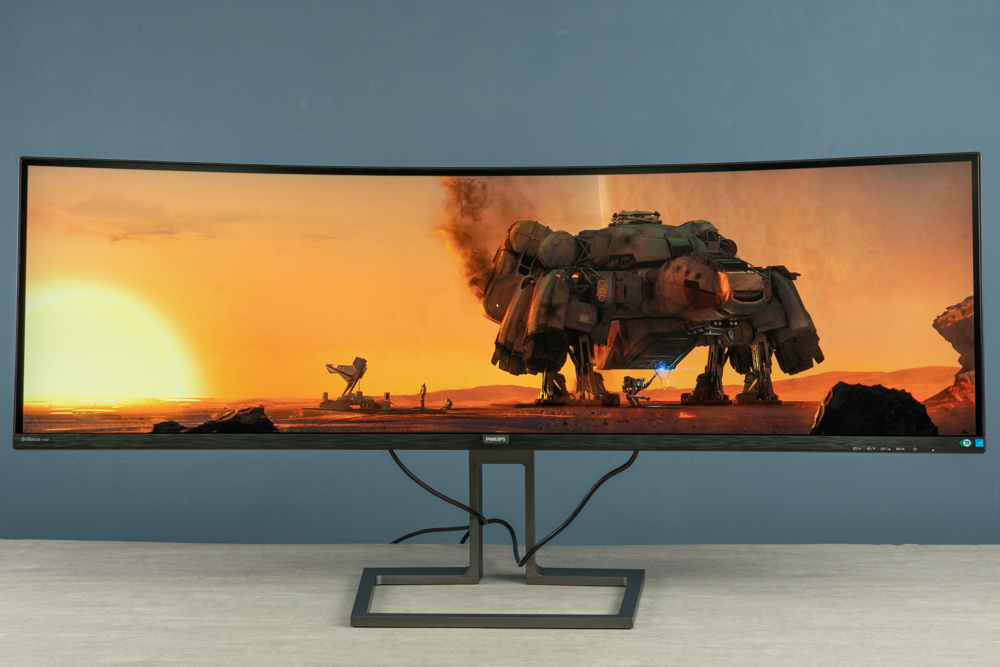
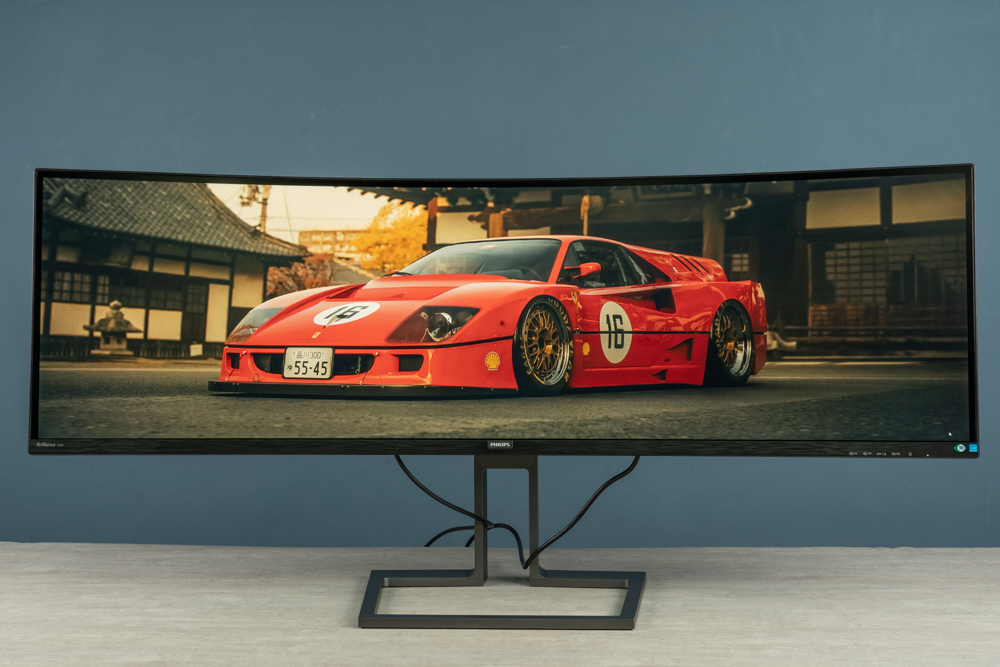
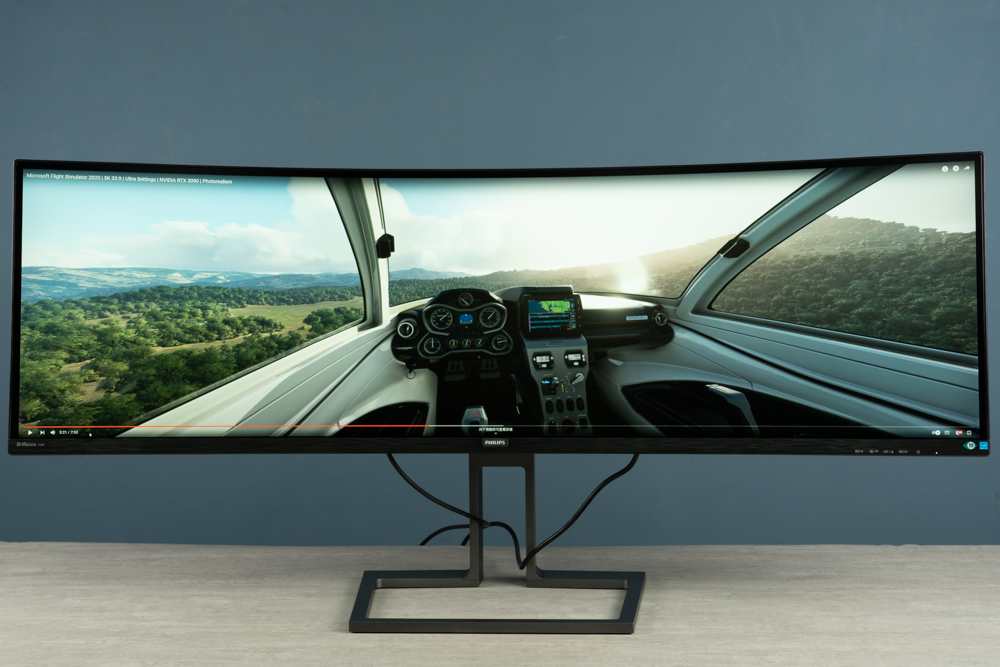
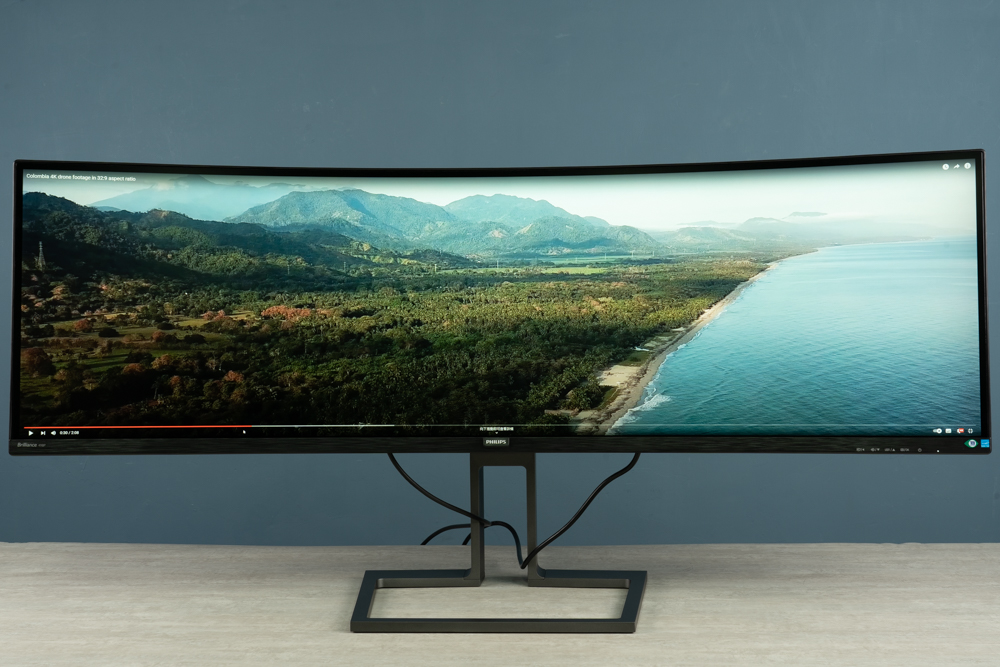

It was also mentioned earlier that PHILIPS 498P9Z supports the entry-level VESA DisplayHDR 400, but if you want to experience a better experience, it is recommended to go straight to the HDR 1000 specification model.
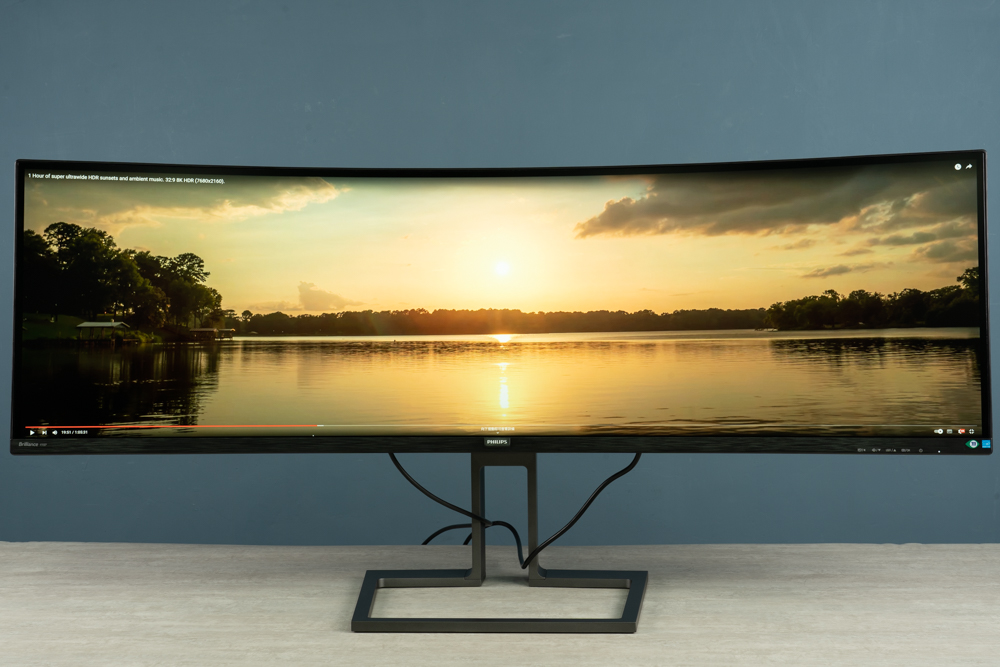
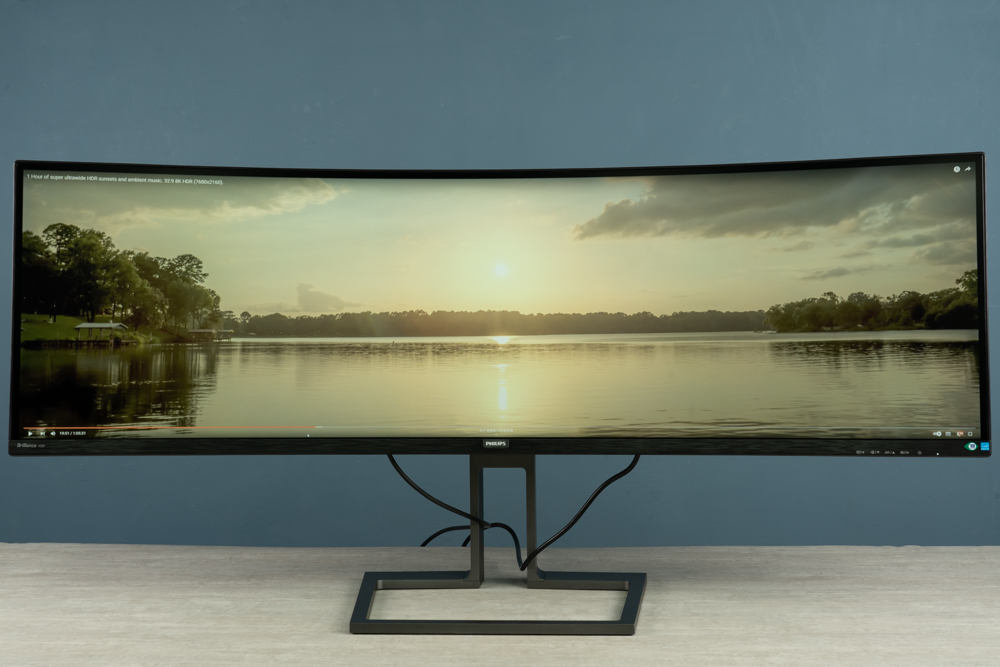
As mentioned earlier, the leftmost button is SmartImage (smart display mode). After pressing it, multiple modes can be quickly switched and set. You can quickly switch according to different usage scenarios. Use the shortcut key to call up the menu and set it in the OSD option. It is faster and more convenient. Next, we will remake several commonly used modes for you to compare the screen differences.
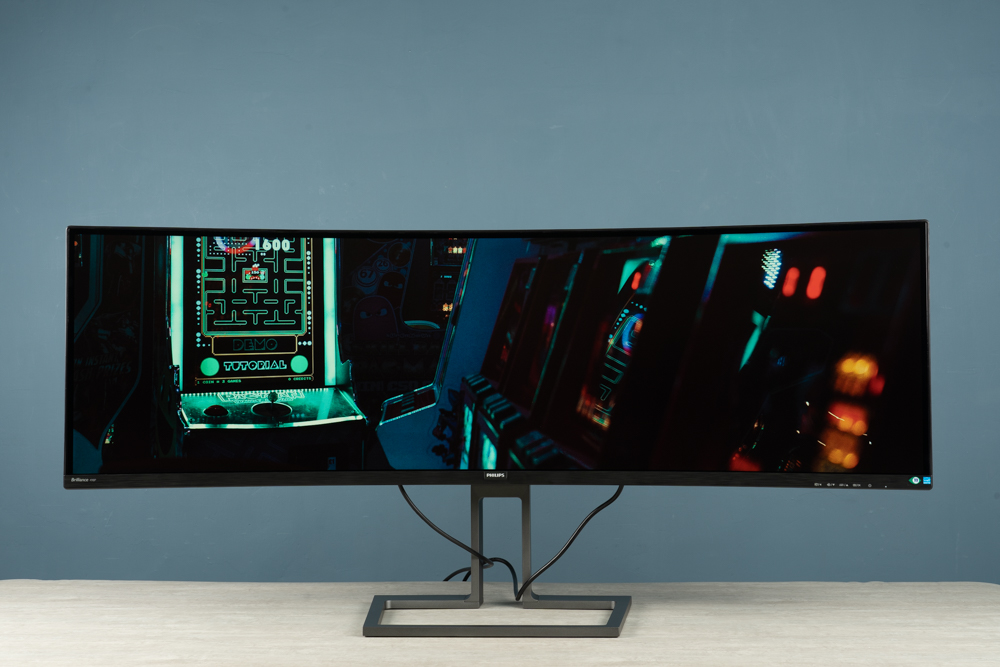
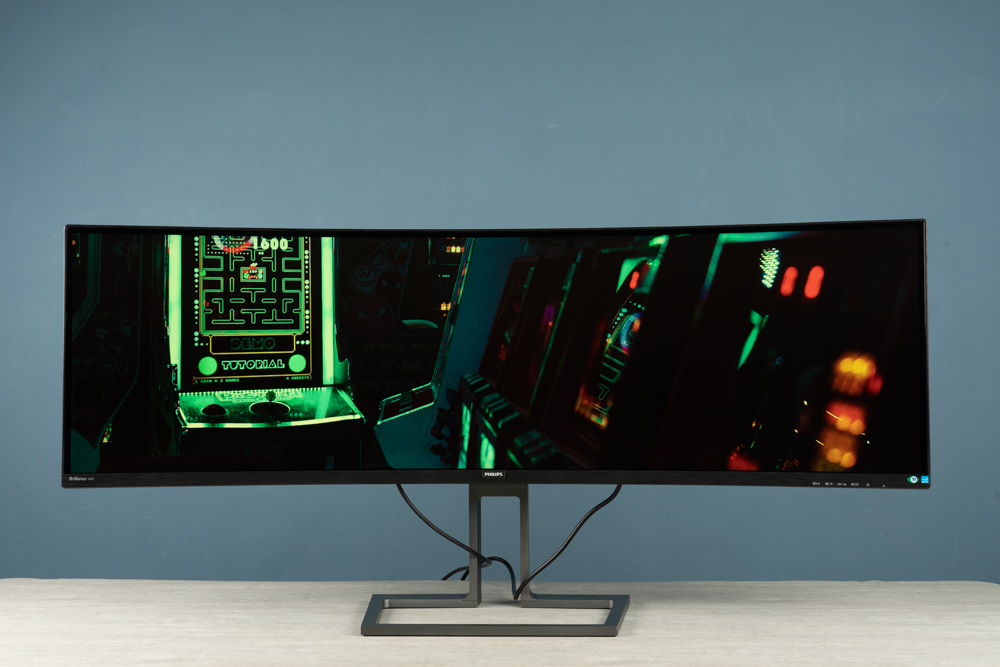
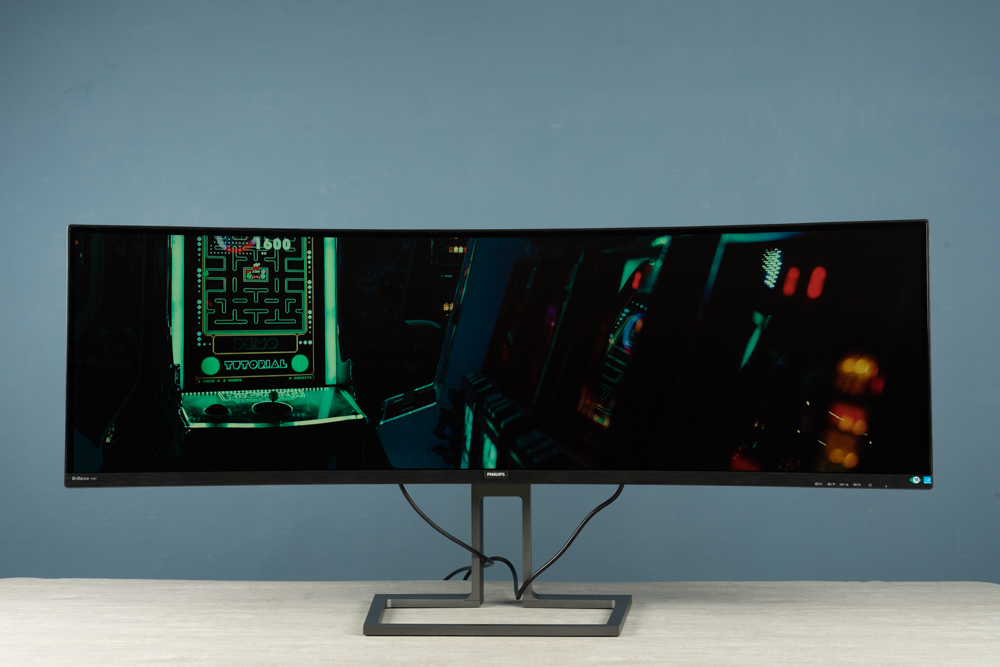
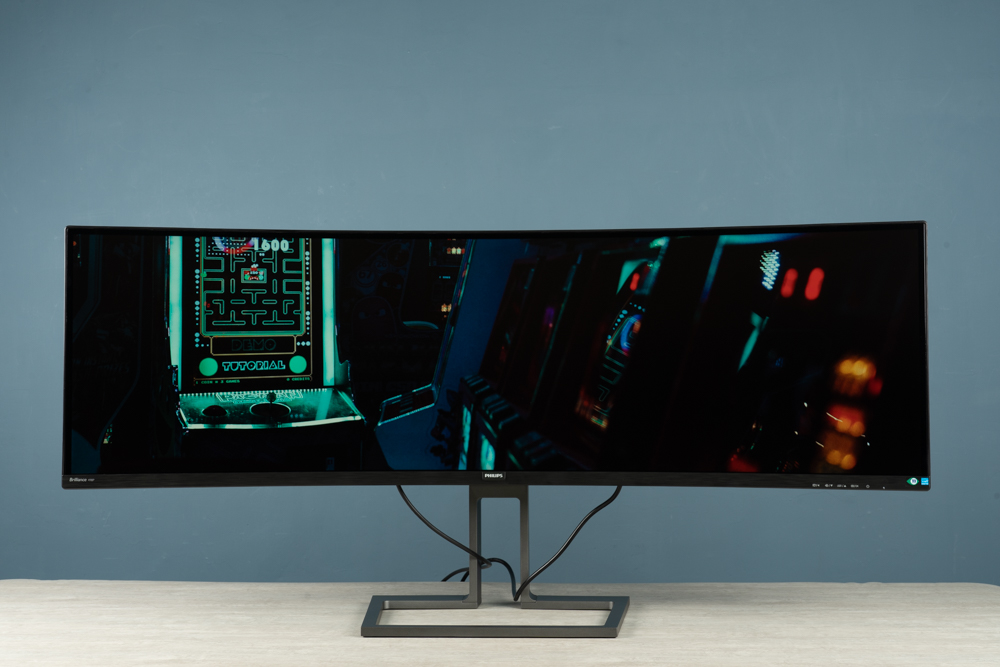
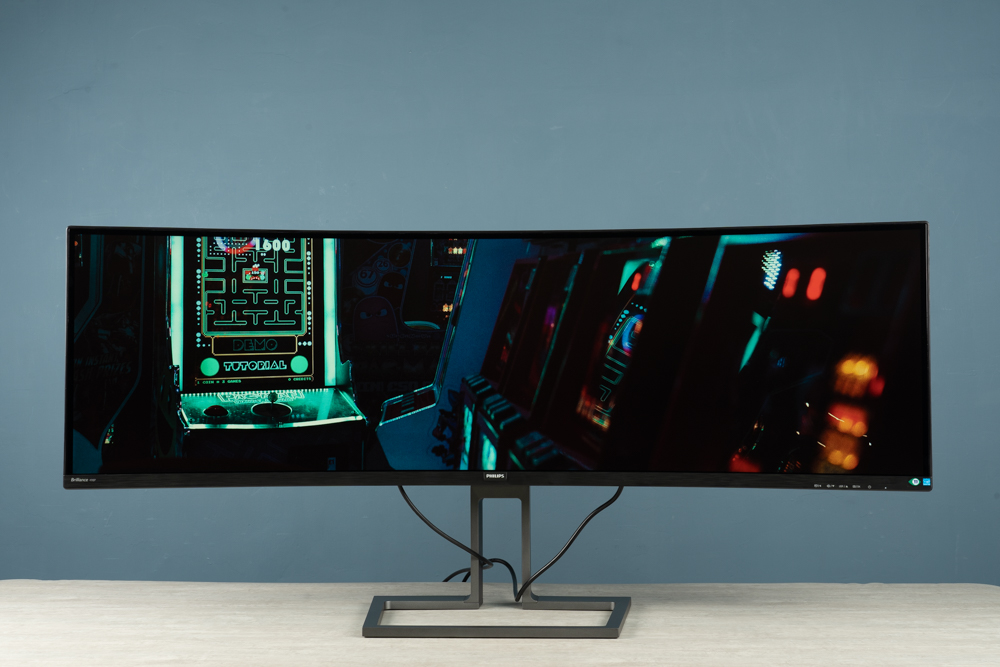
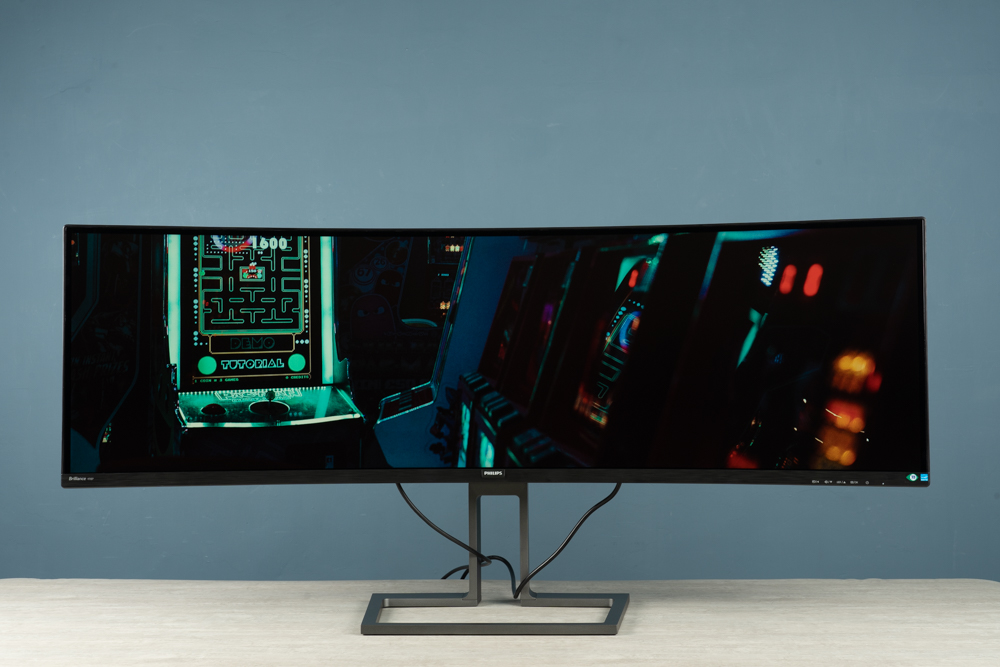
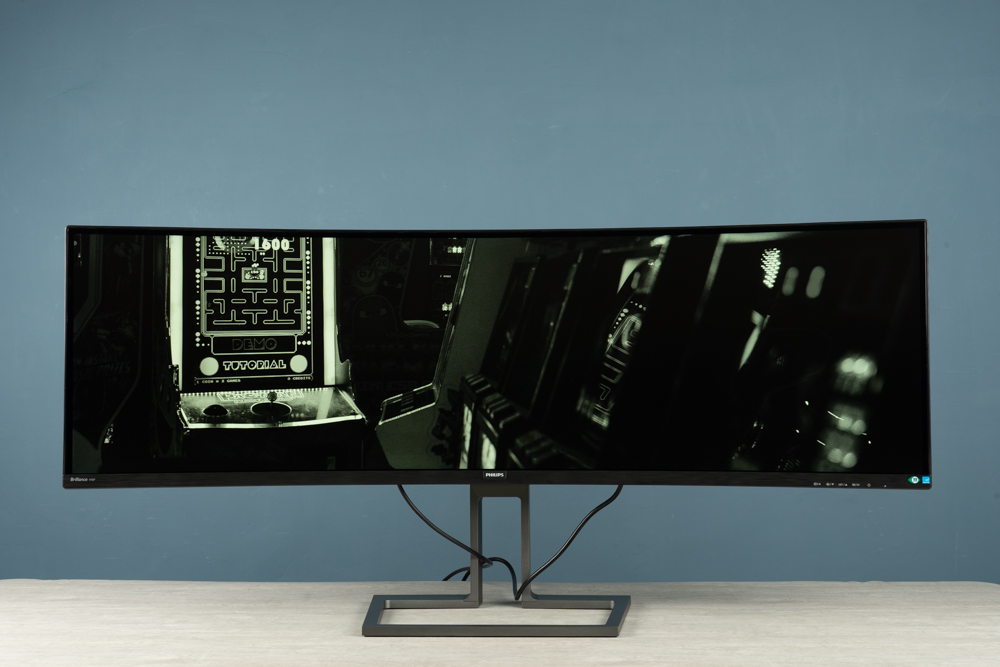
Summary
PHILIPS launched a new 32:9 49-inch 1800R curved display 498P9Z, which achieves ultra-wide visual effects with 5120×1440 Dual QHD resolution. With the support of MultiView and KVM functions, we know that this screen is specially designed to replace multiple screens. The seamless dual-screen display is coming to the display market. For multitasking applications with dual-screen or two devices operating simultaneously, the 498P9Z is a magic weapon.
It is equipped with a VA panel and a refresh rate of up to 165 Hz and adopts Adaptive Sync technology to prevent the tearing of the screen. It can also have a good visual experience on high-frame game screens. Compared with the previous generation, it has a lot of improvements. The price is more affordable at 26,888 yuan. If you want to experience the 32:9 ultra-wide visual feast, you can also experience the 498P9Z at a price that does not hurt your wallet.
If this article is helpful for you, please share this article with your friends on social media. Thank you!!
This article is based on the personality of the reviews. You are responsible for fact-checking if the contents are not facts or accurate.
Title: PHILIPS Brilliance 32:9 SuperWide 498P9Z screen out of the box / 5120×1440, VA, 165 Hz, HDR 400